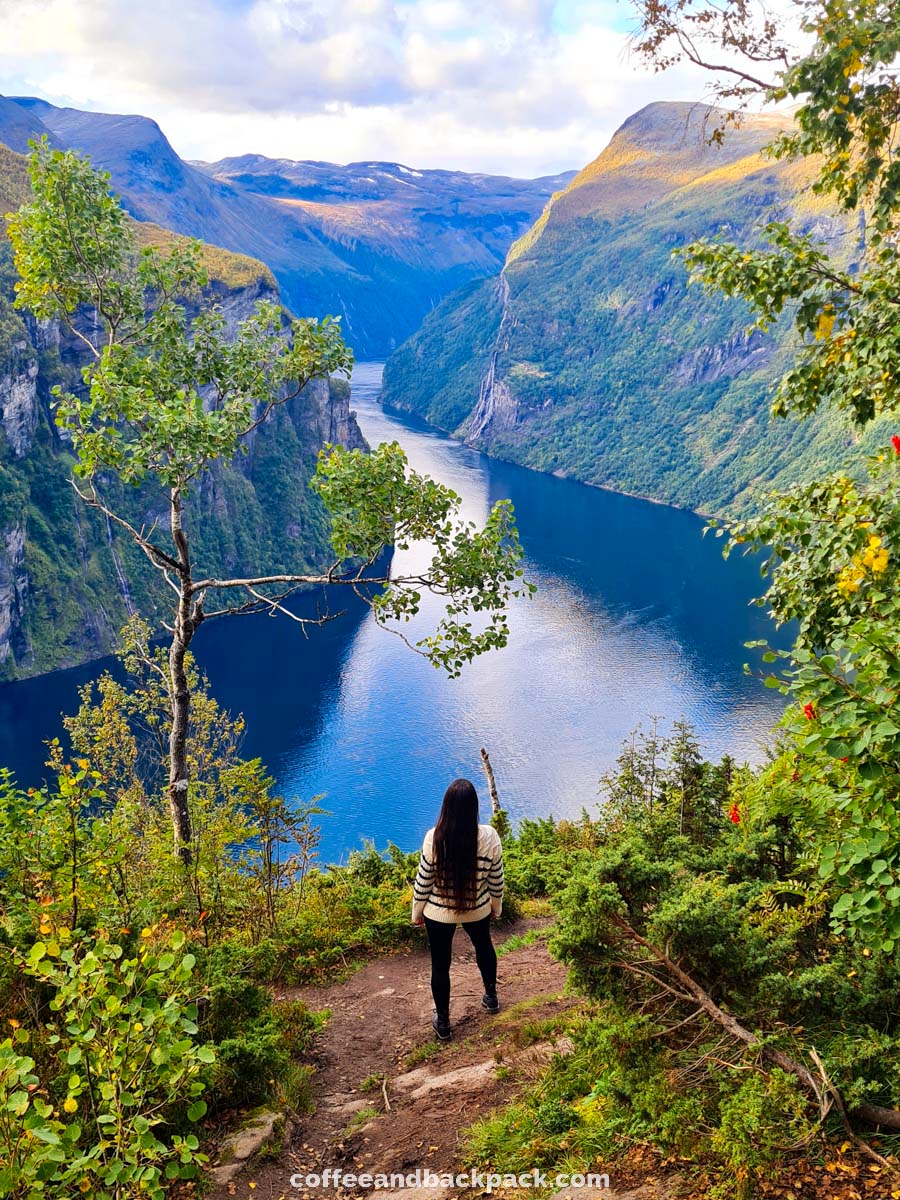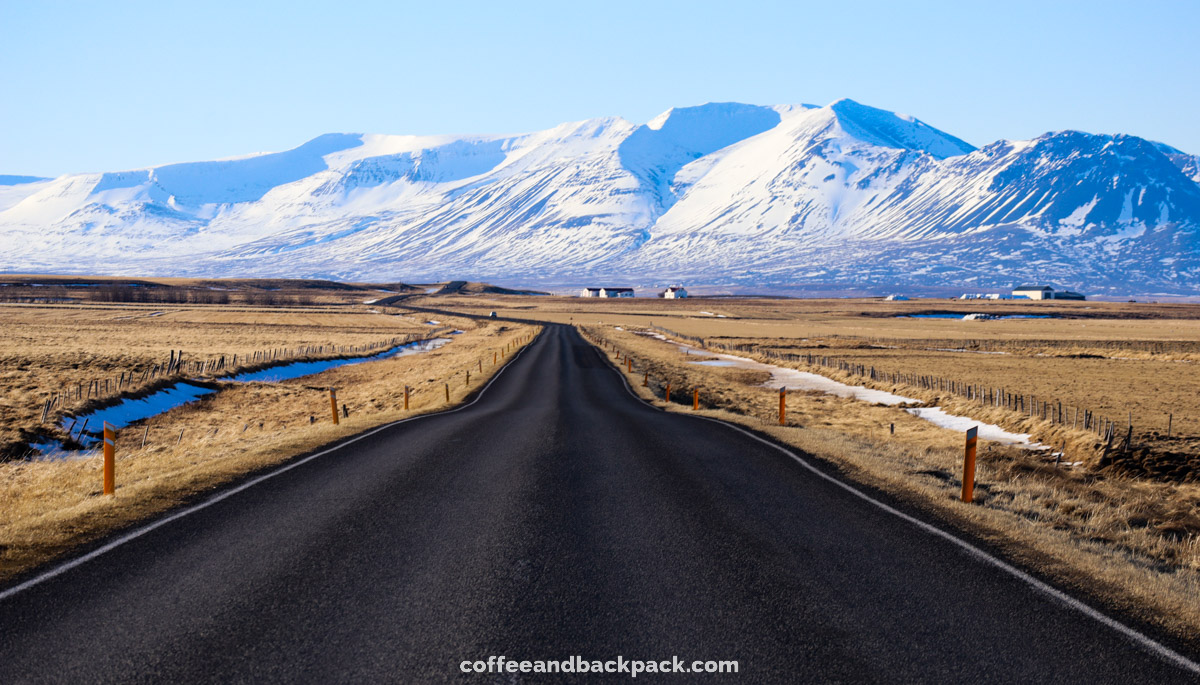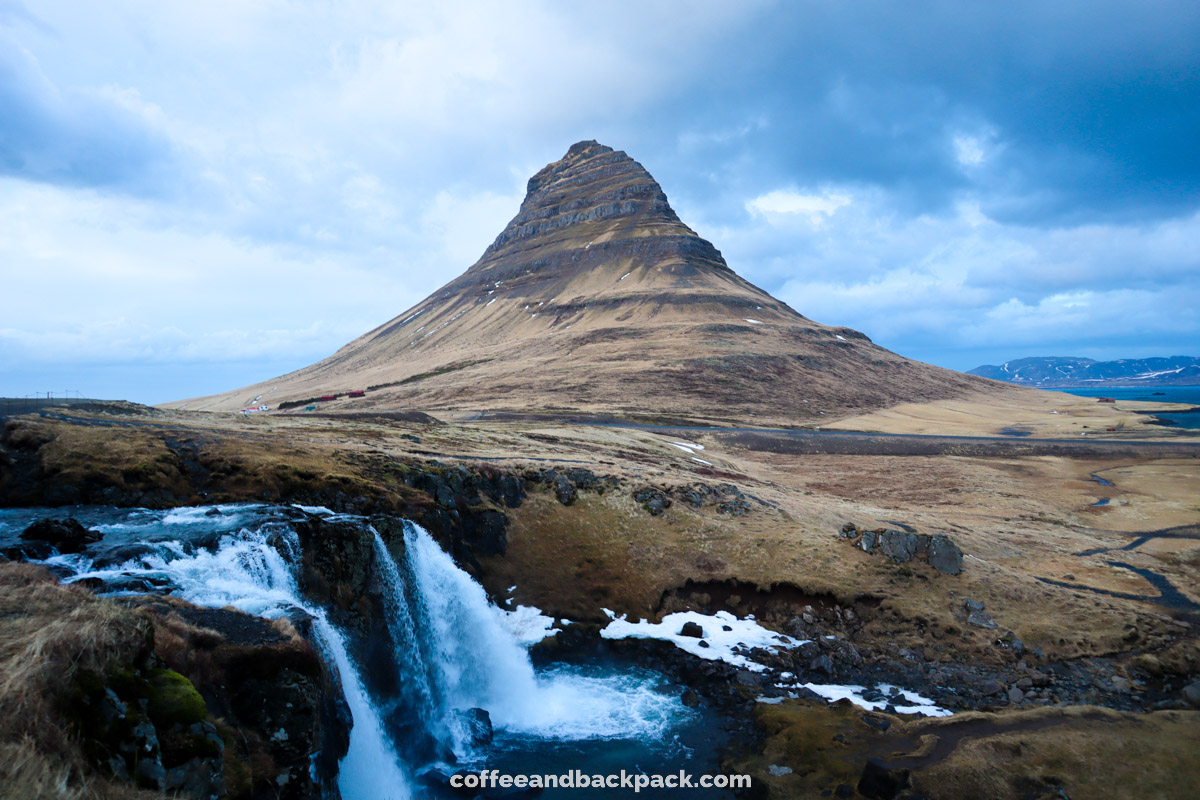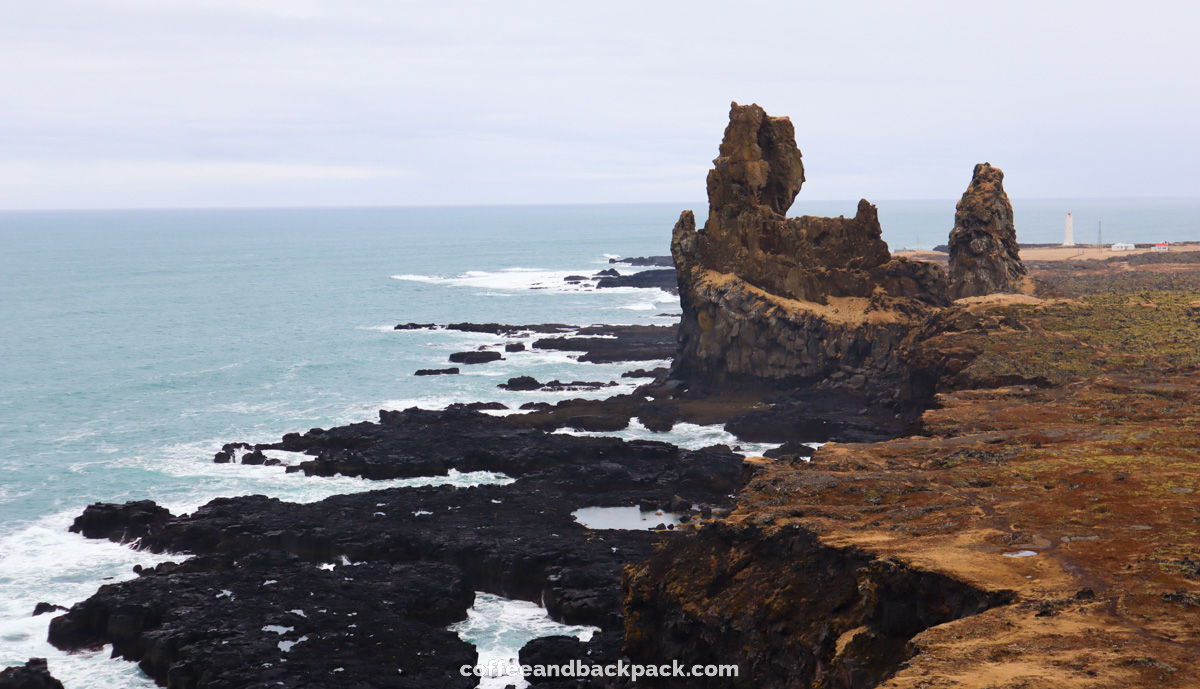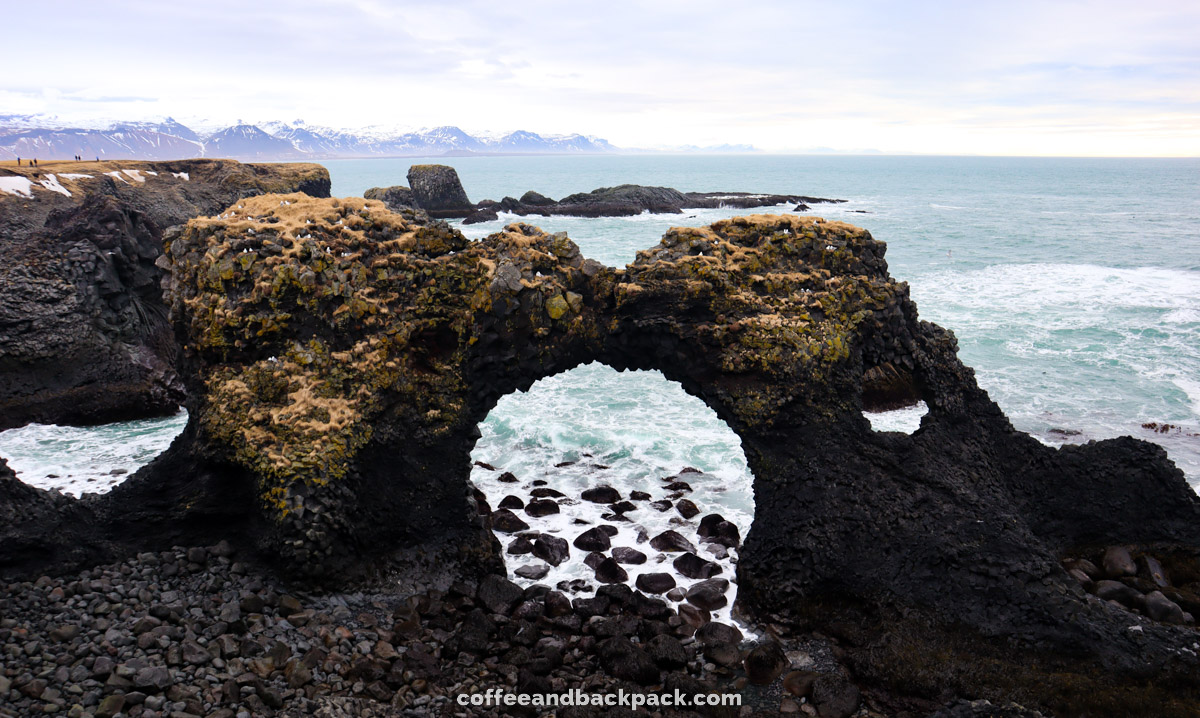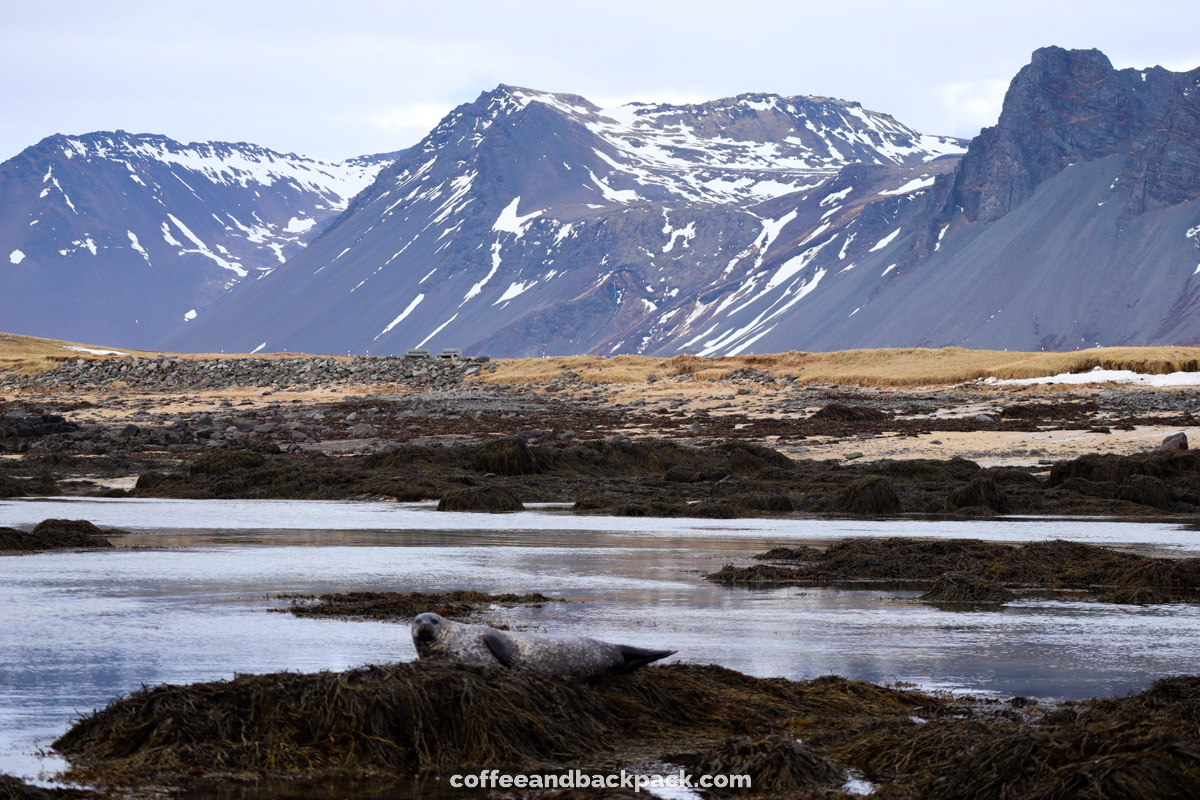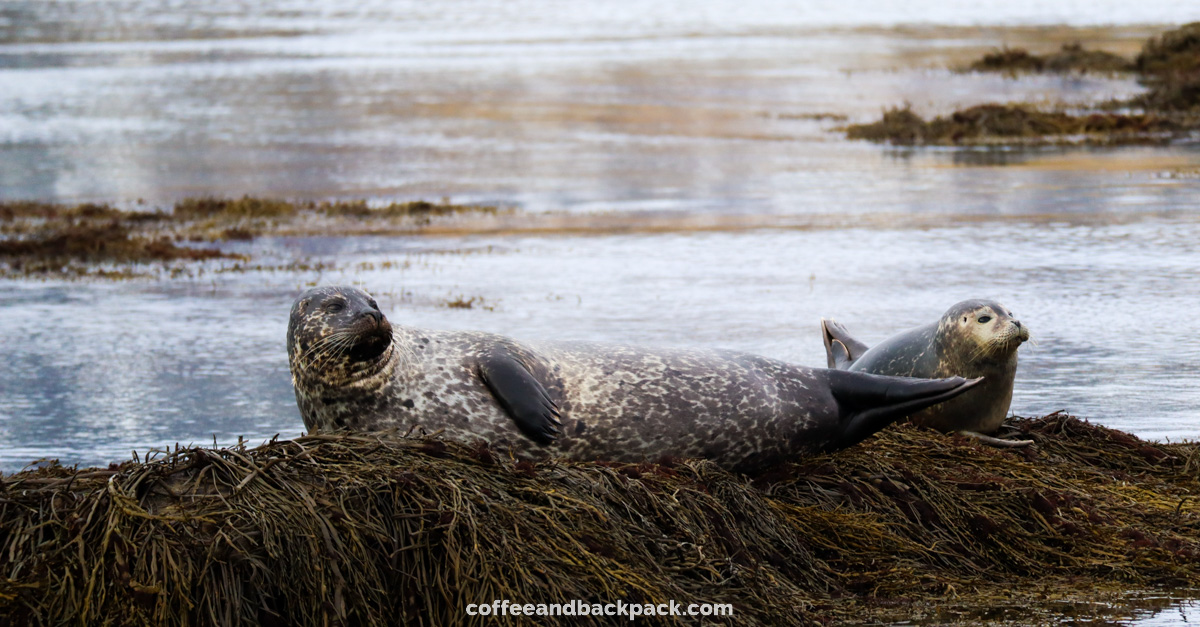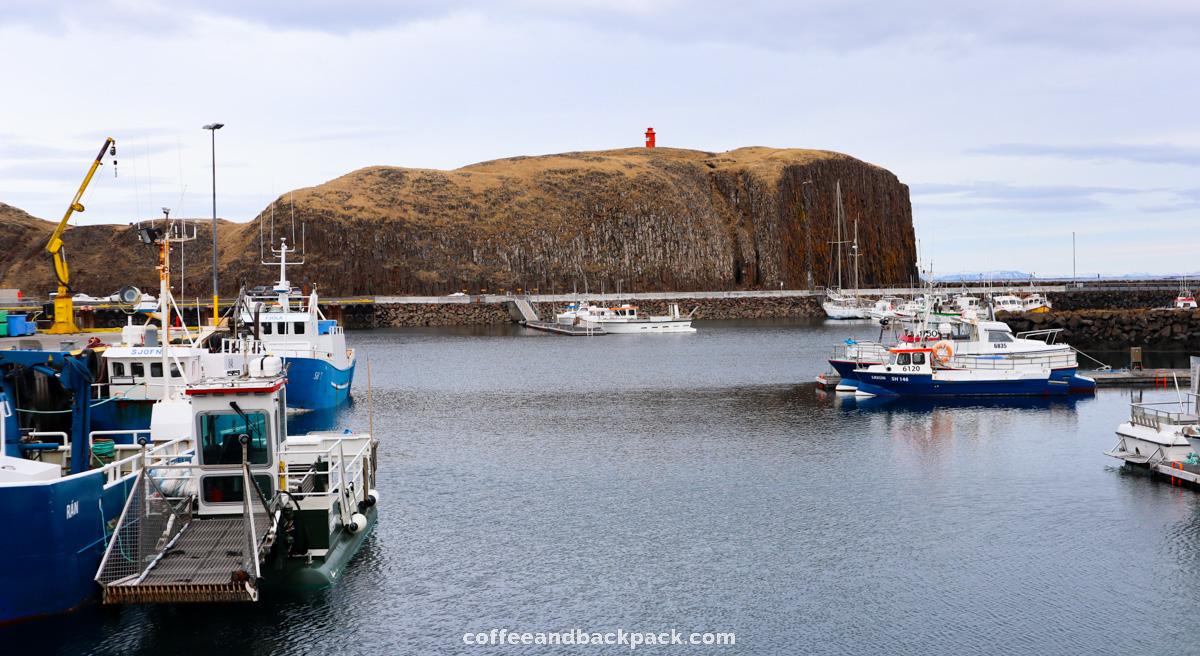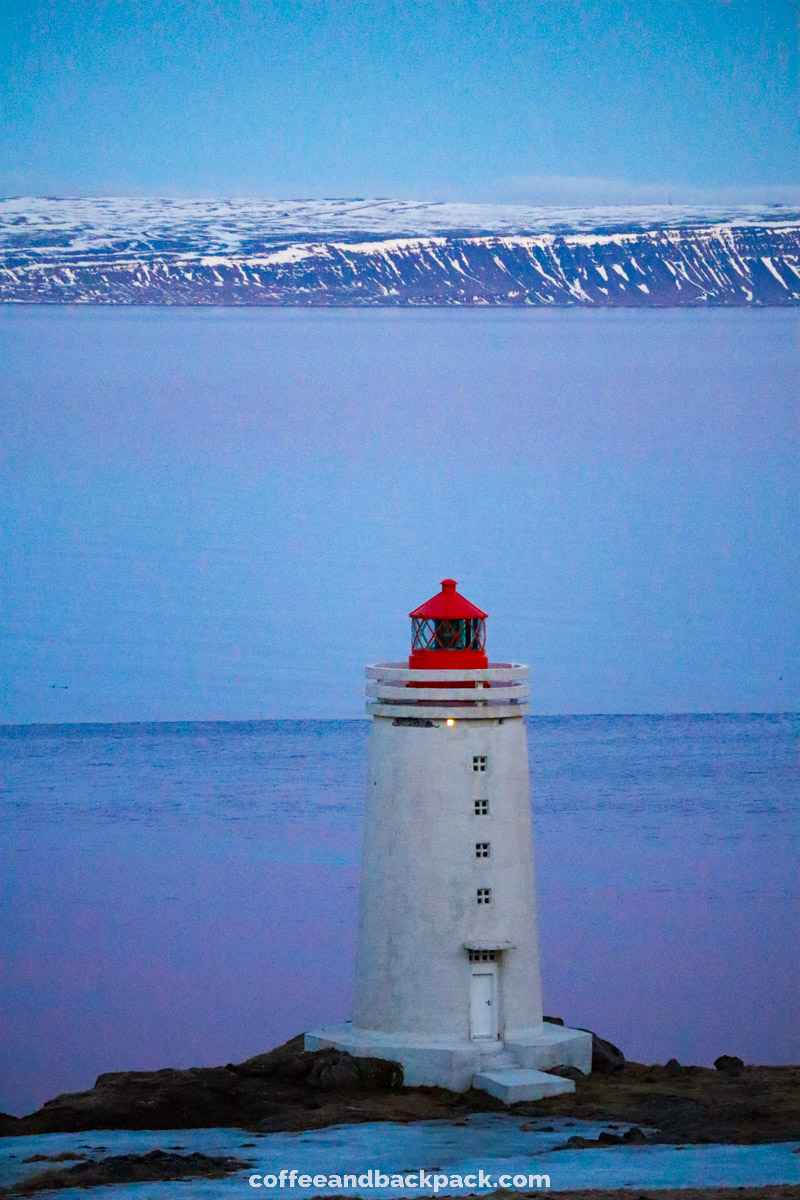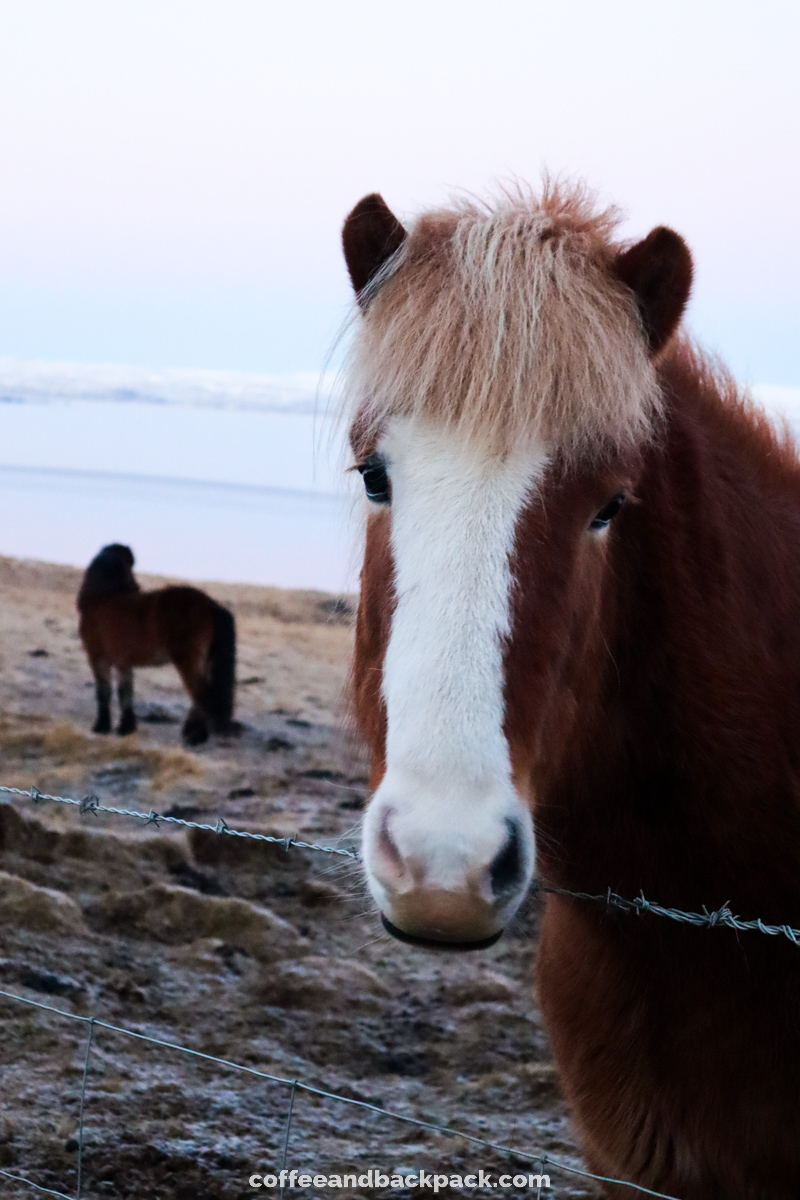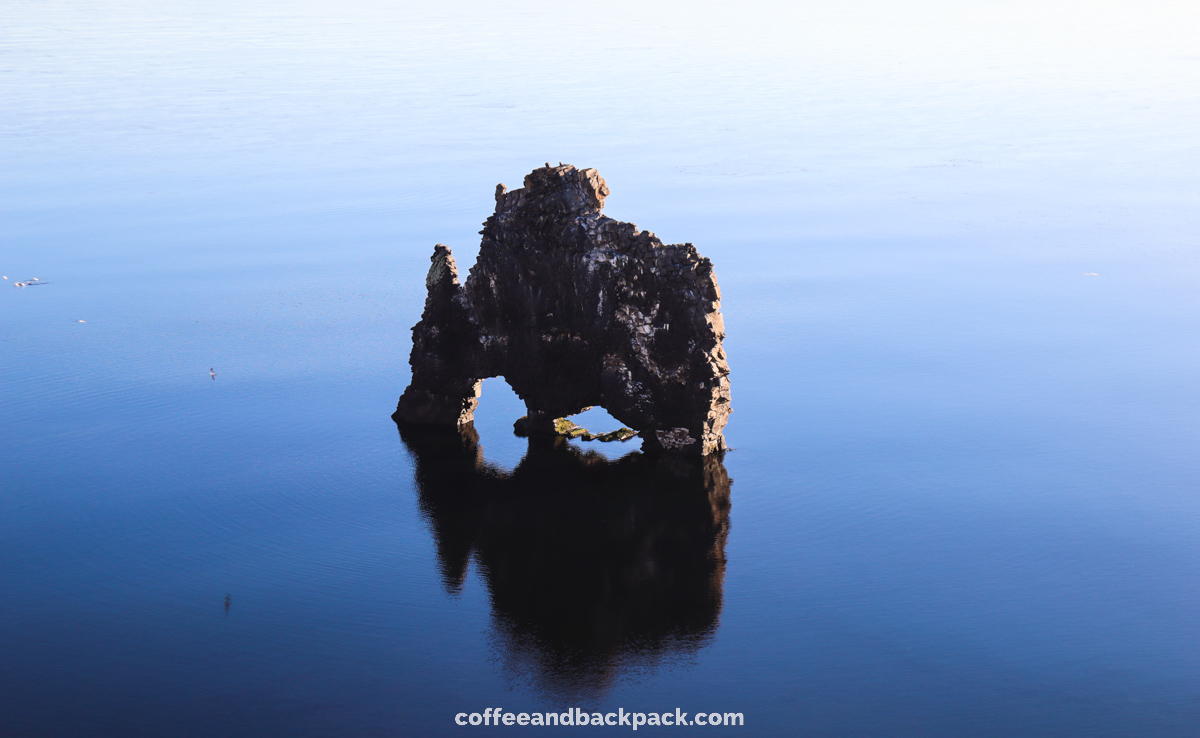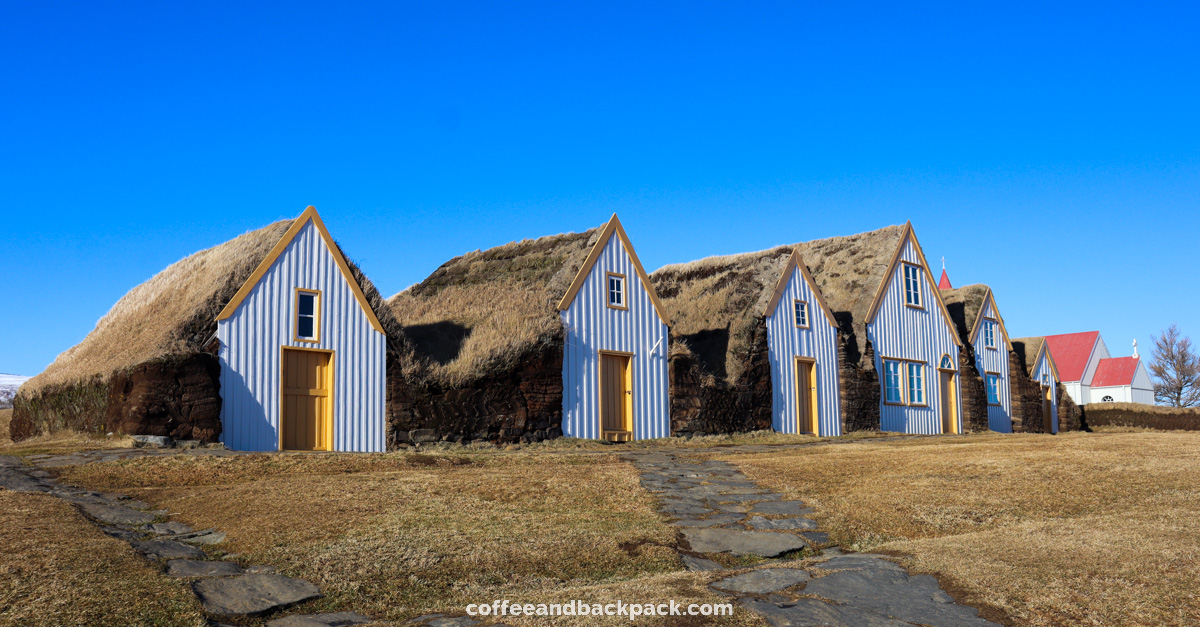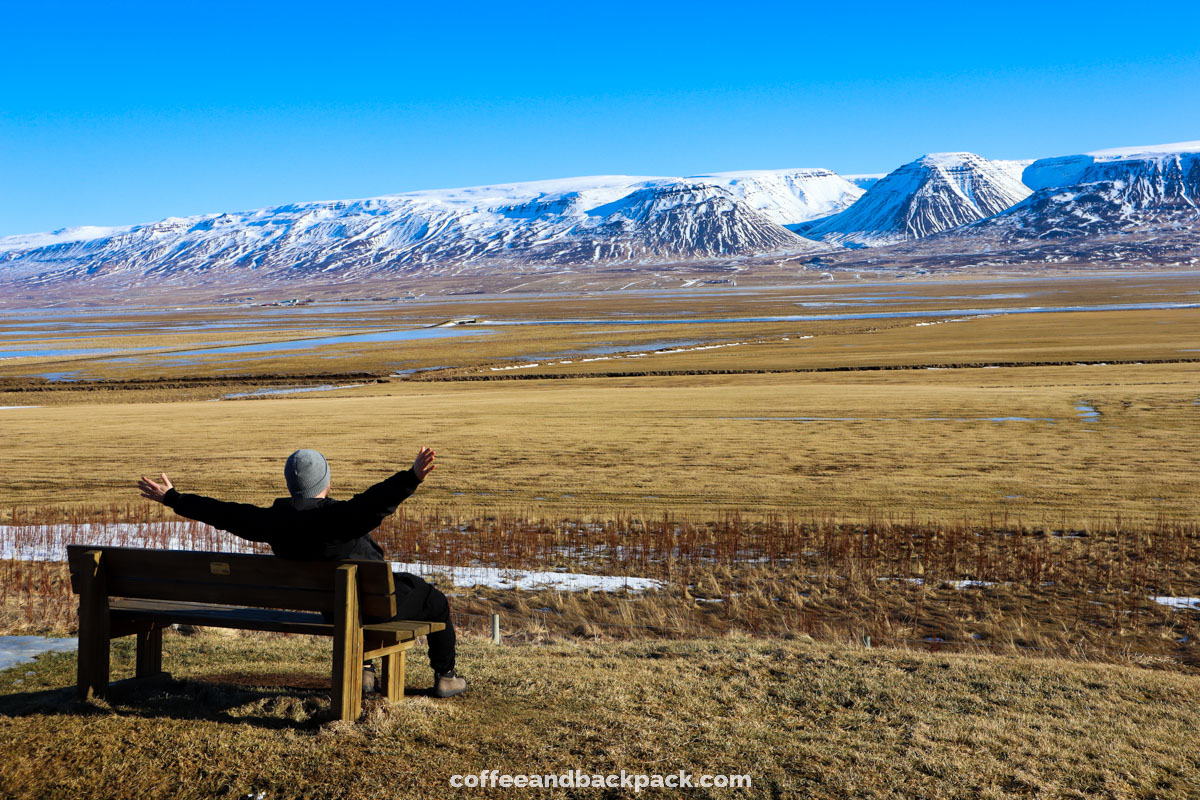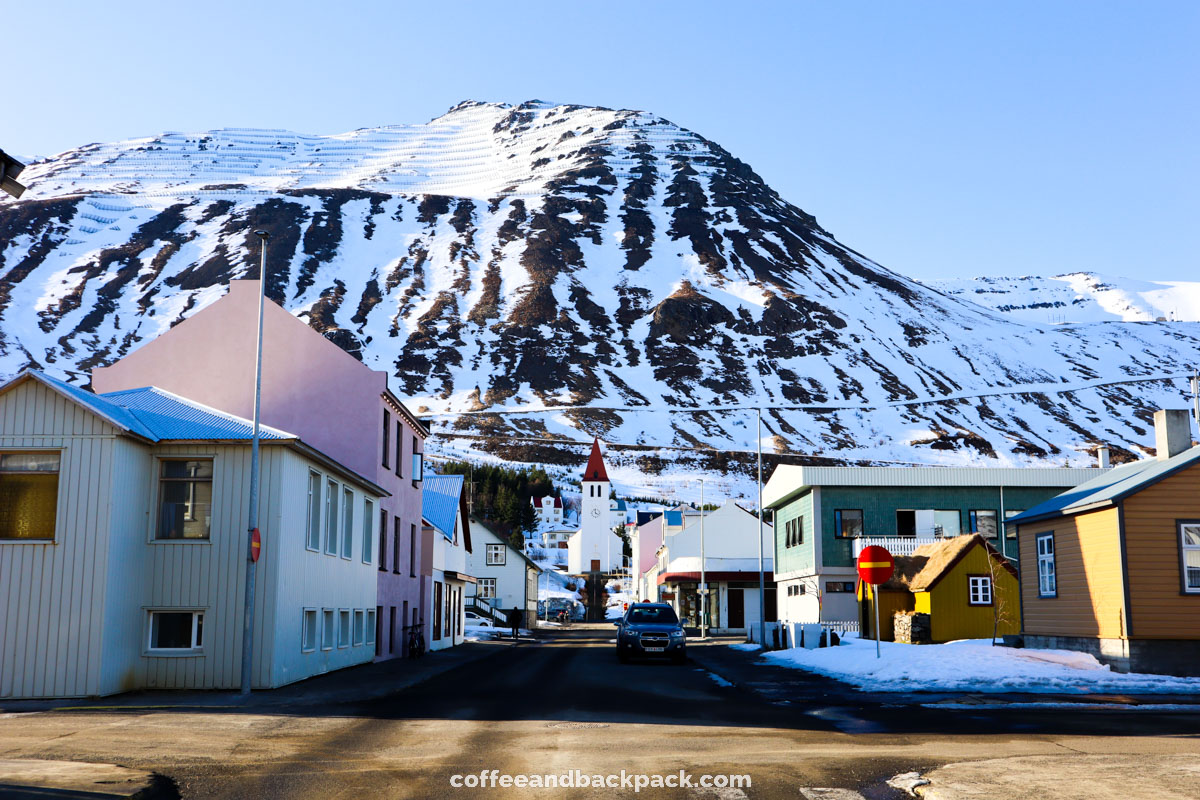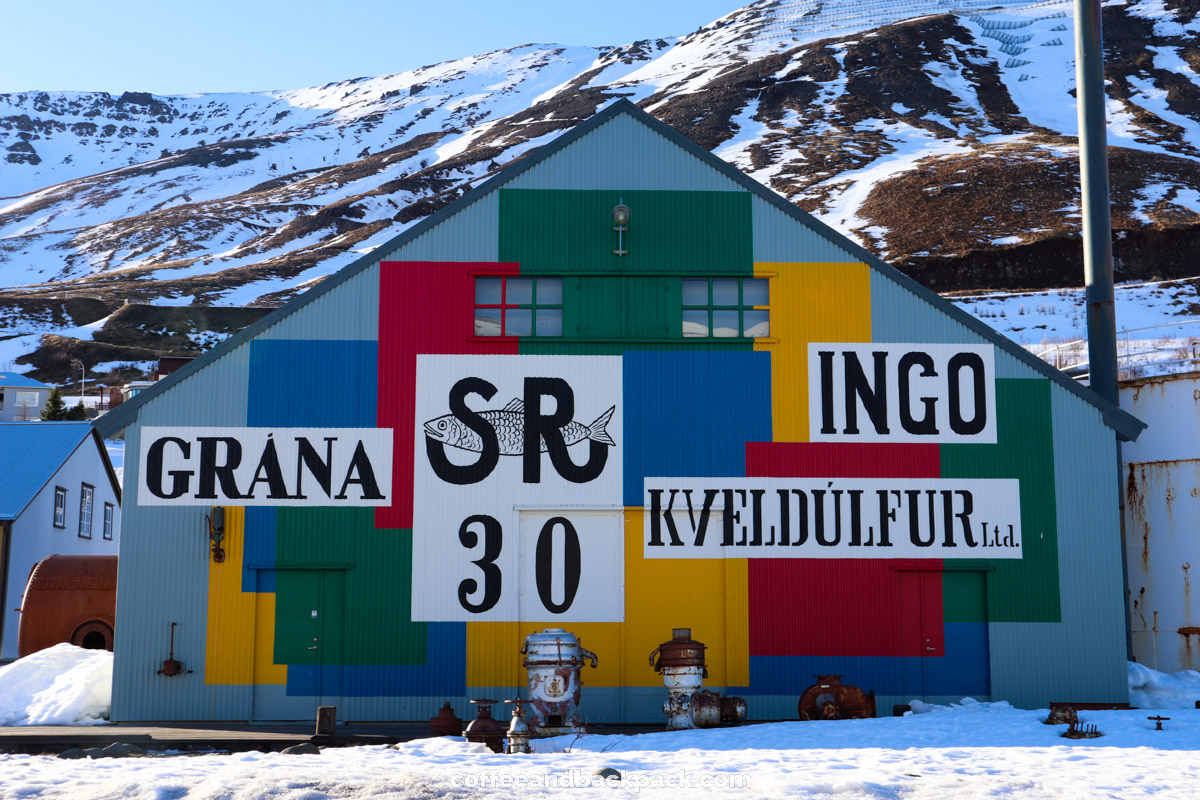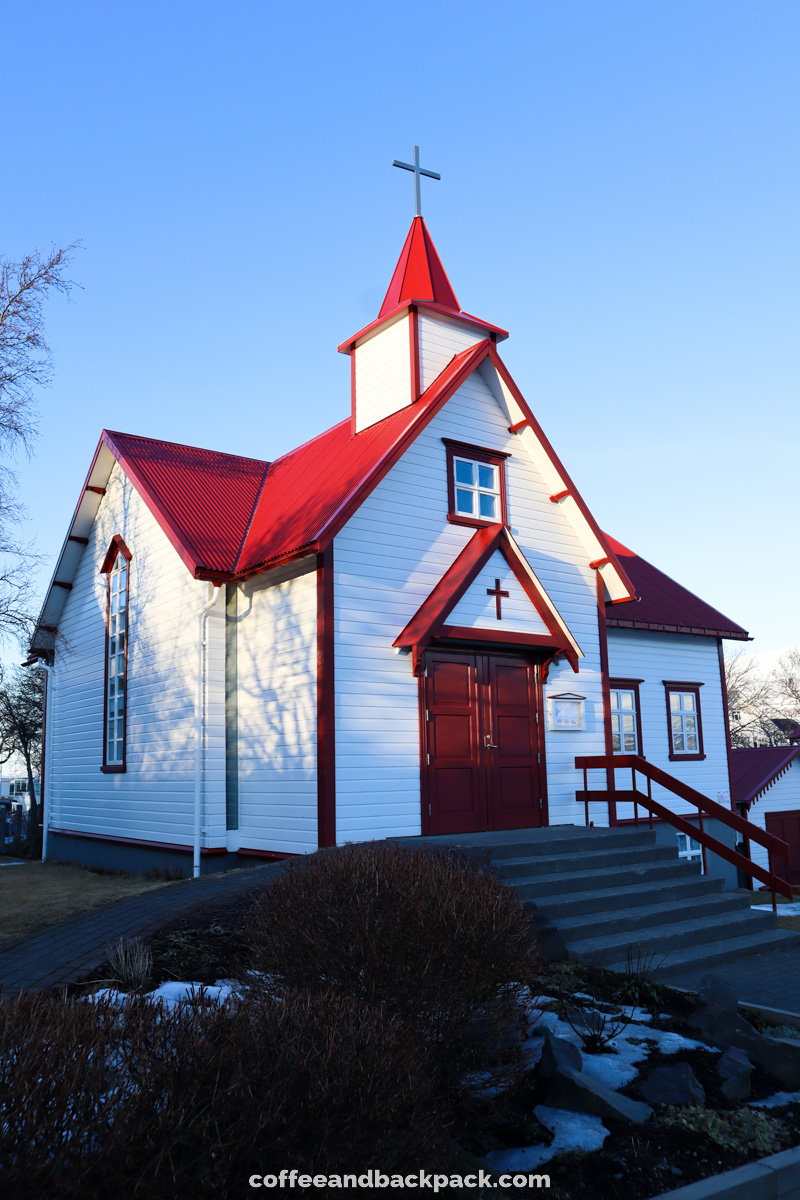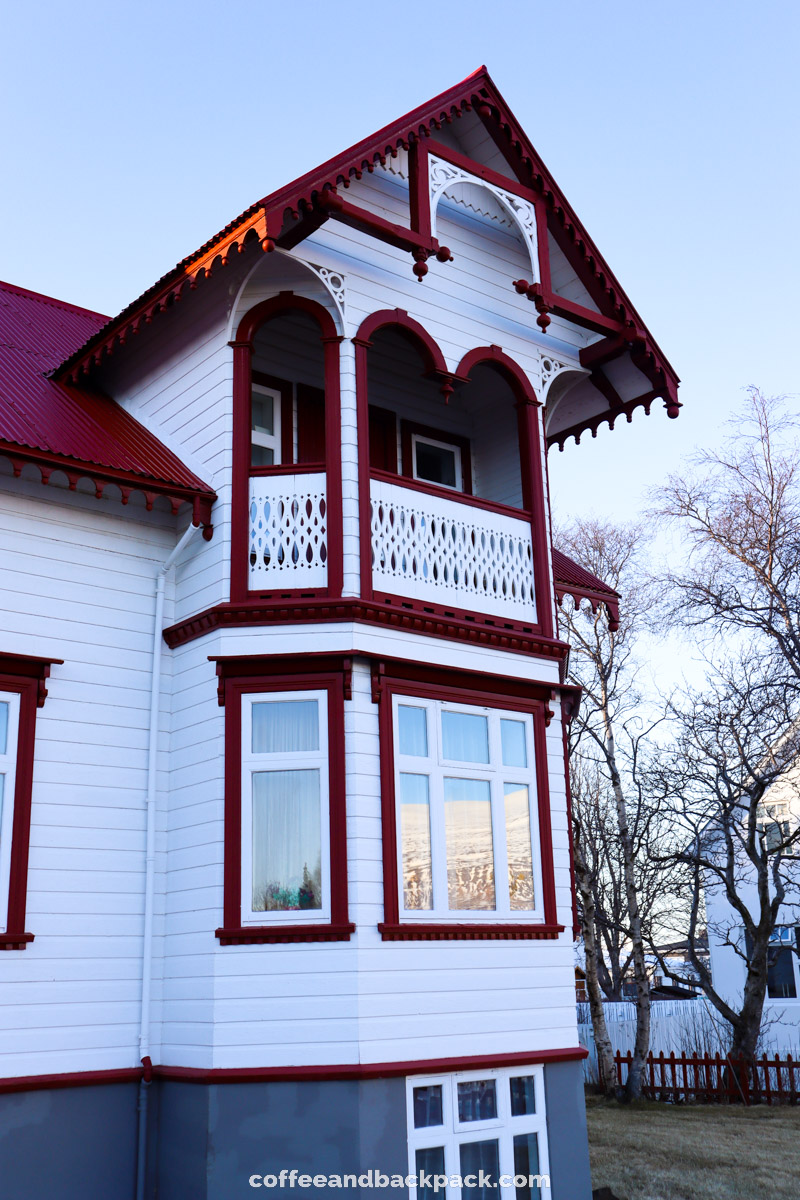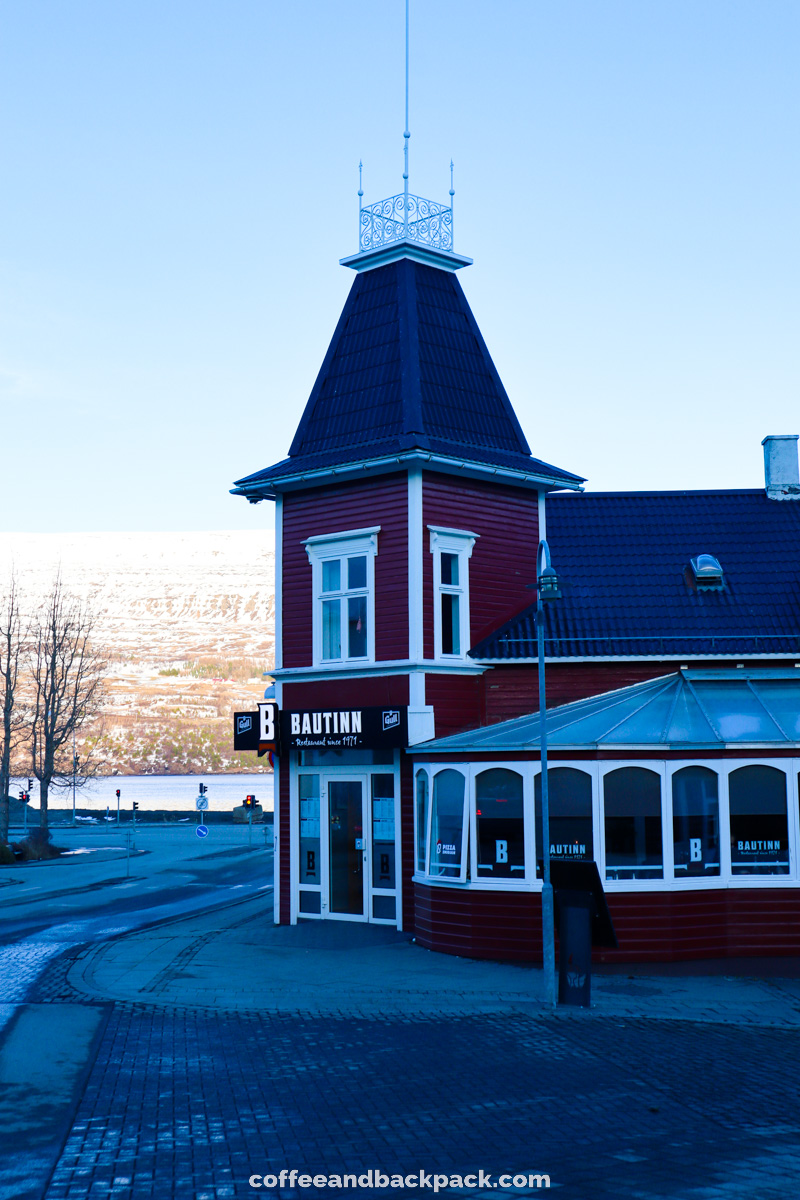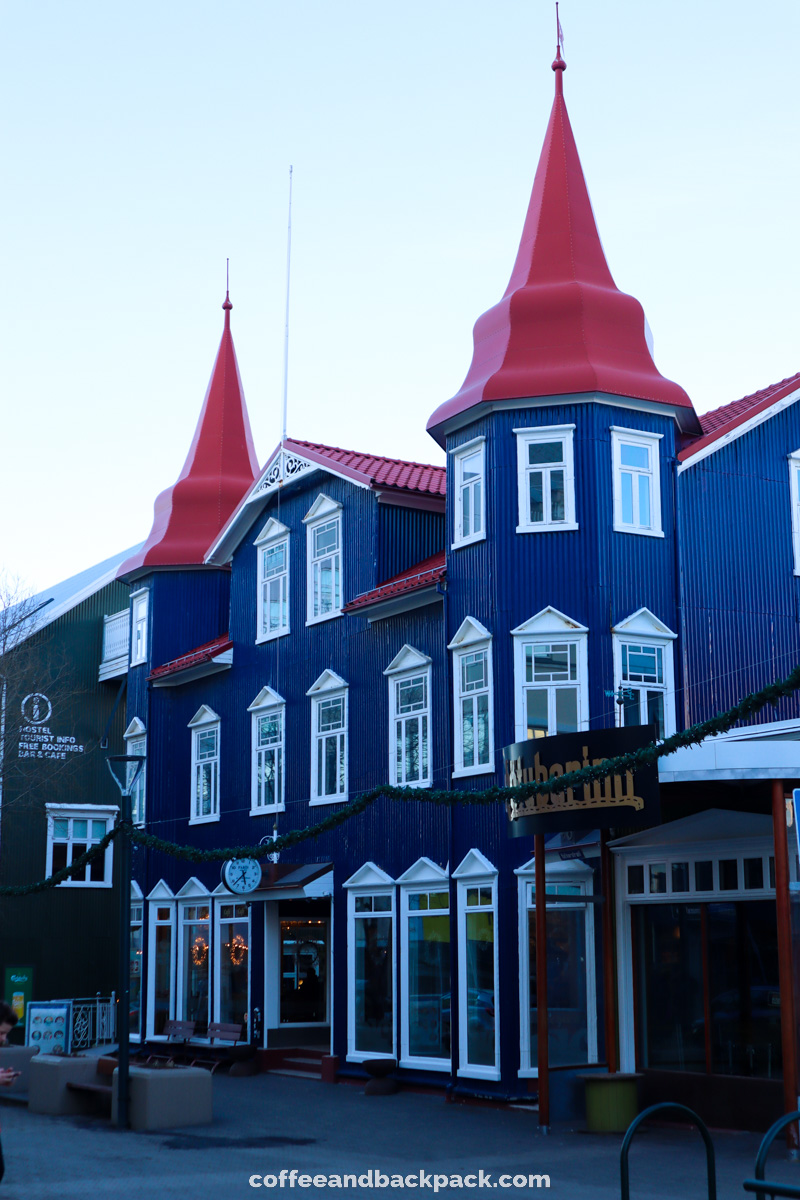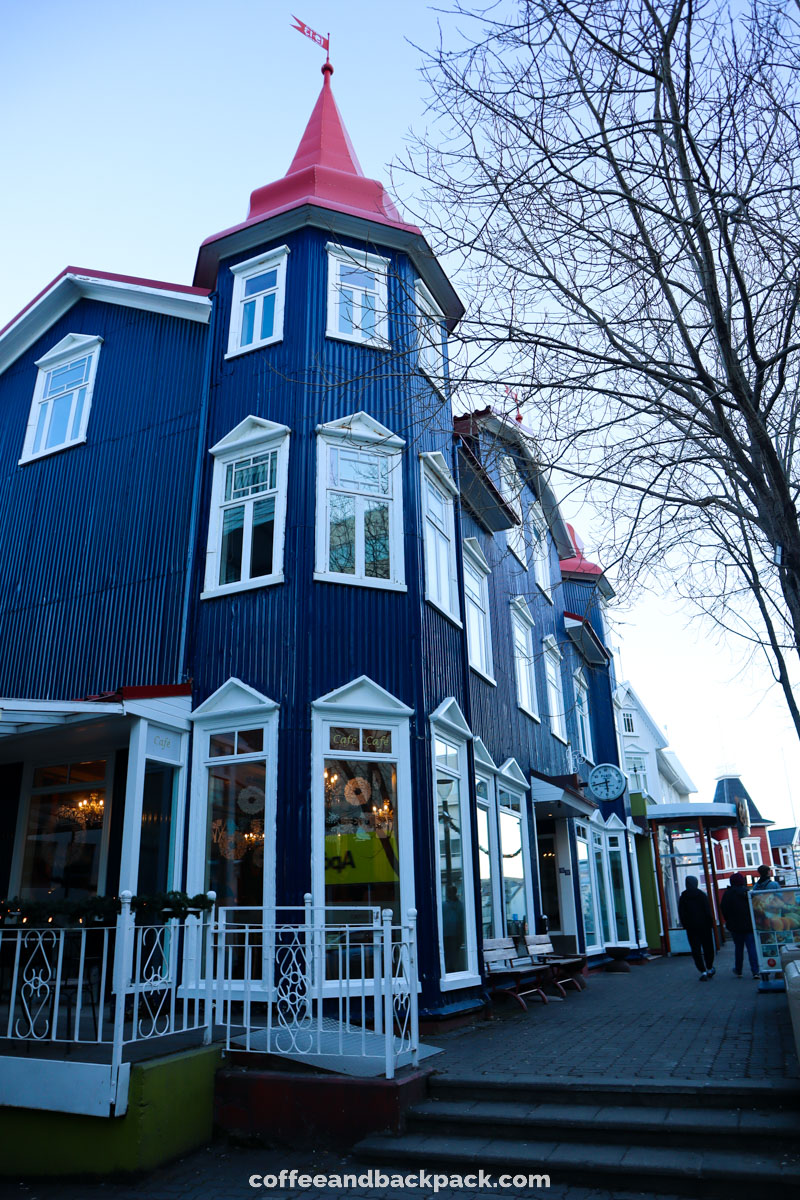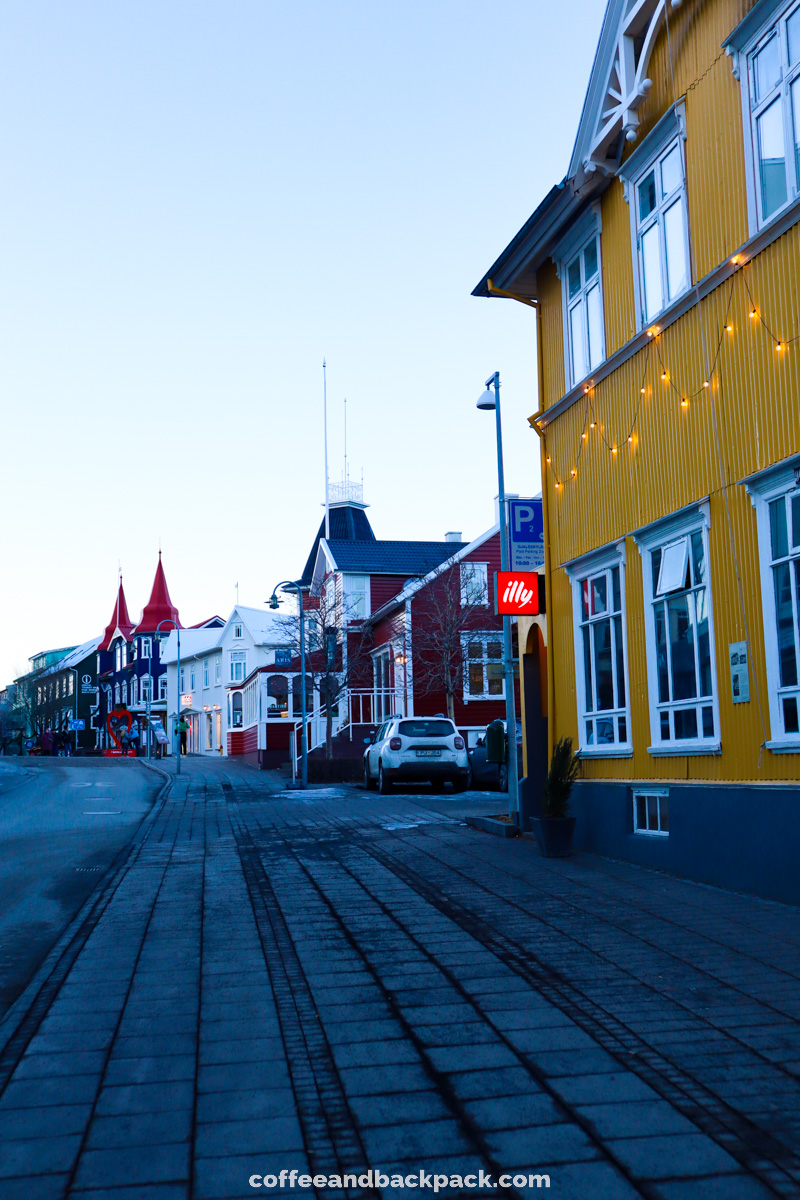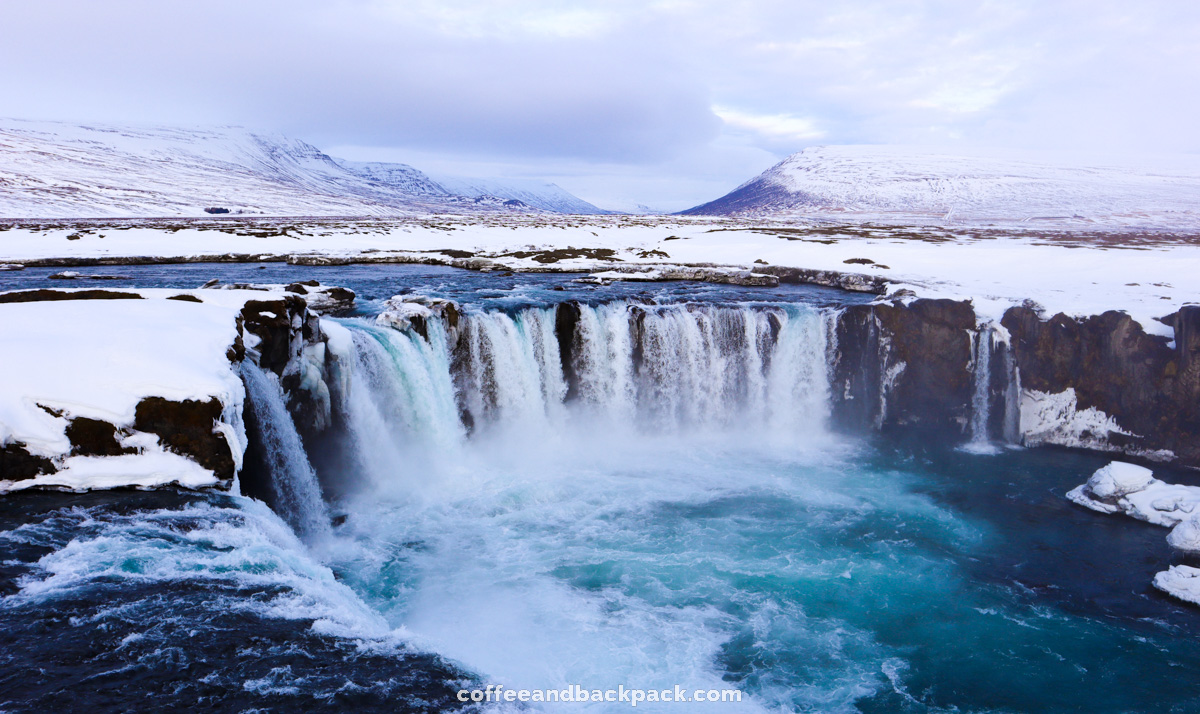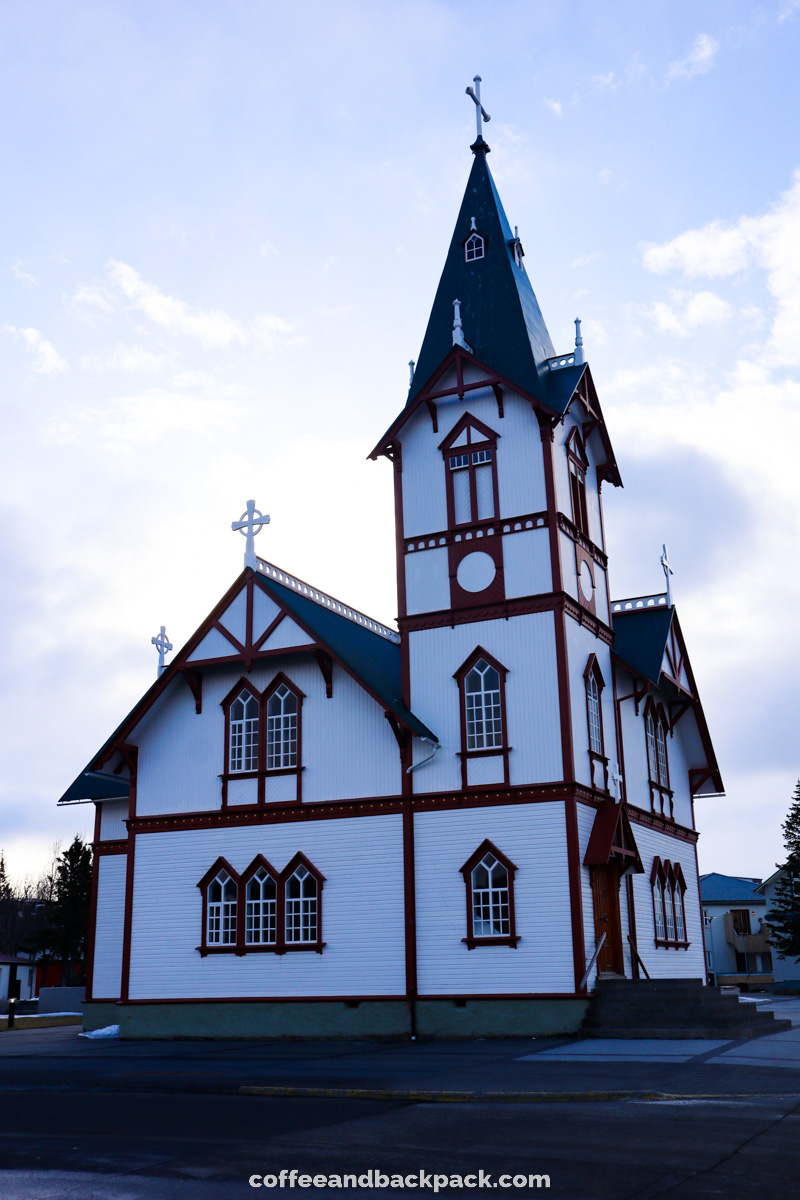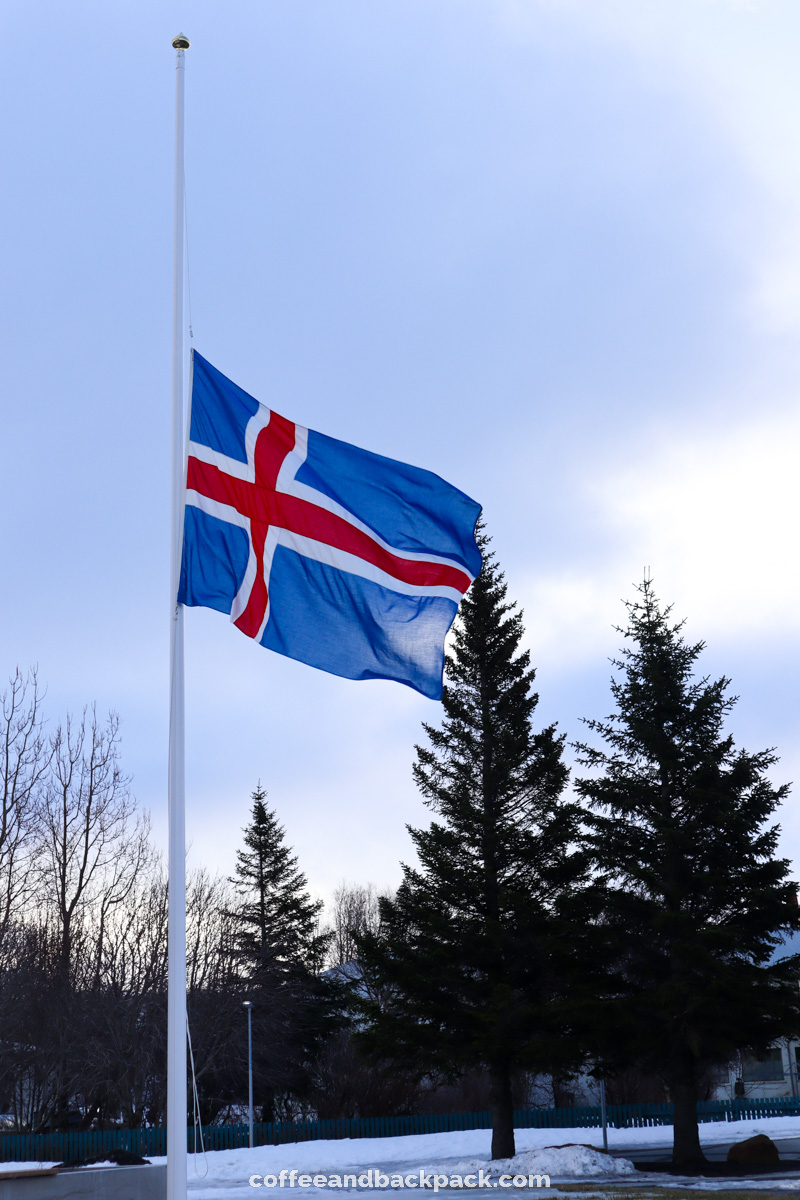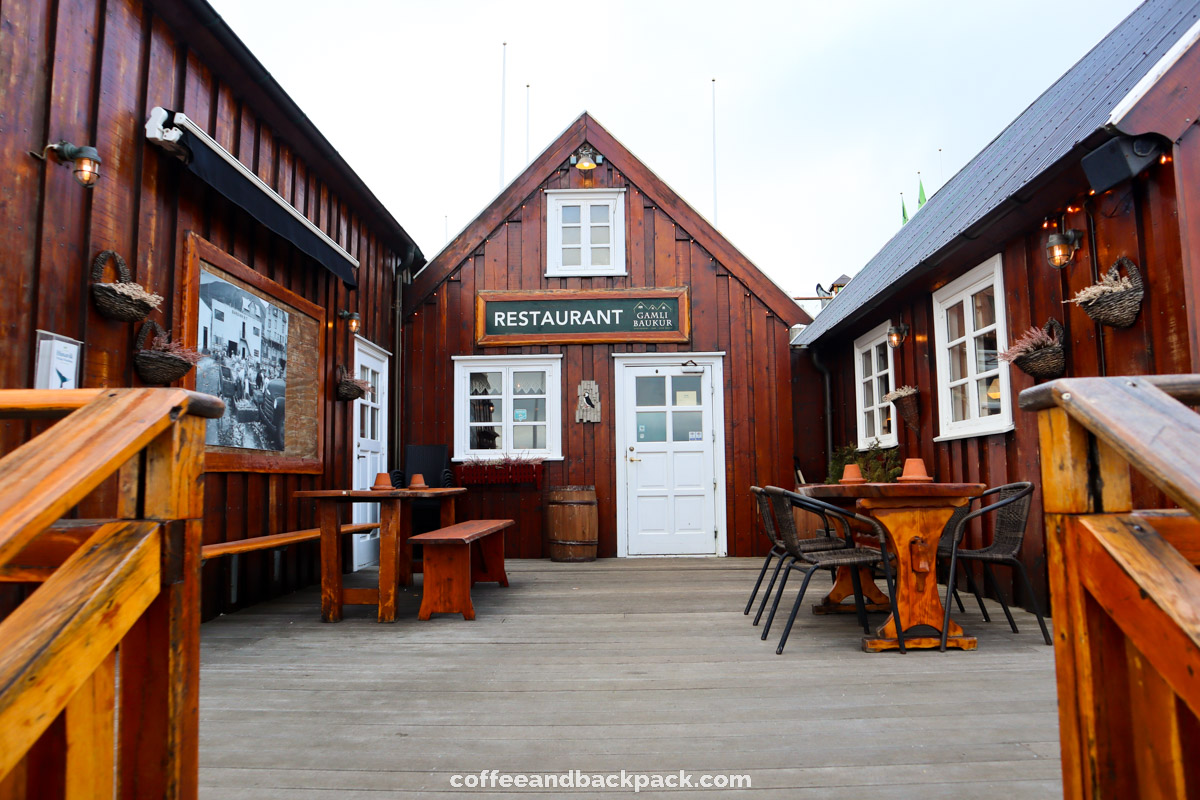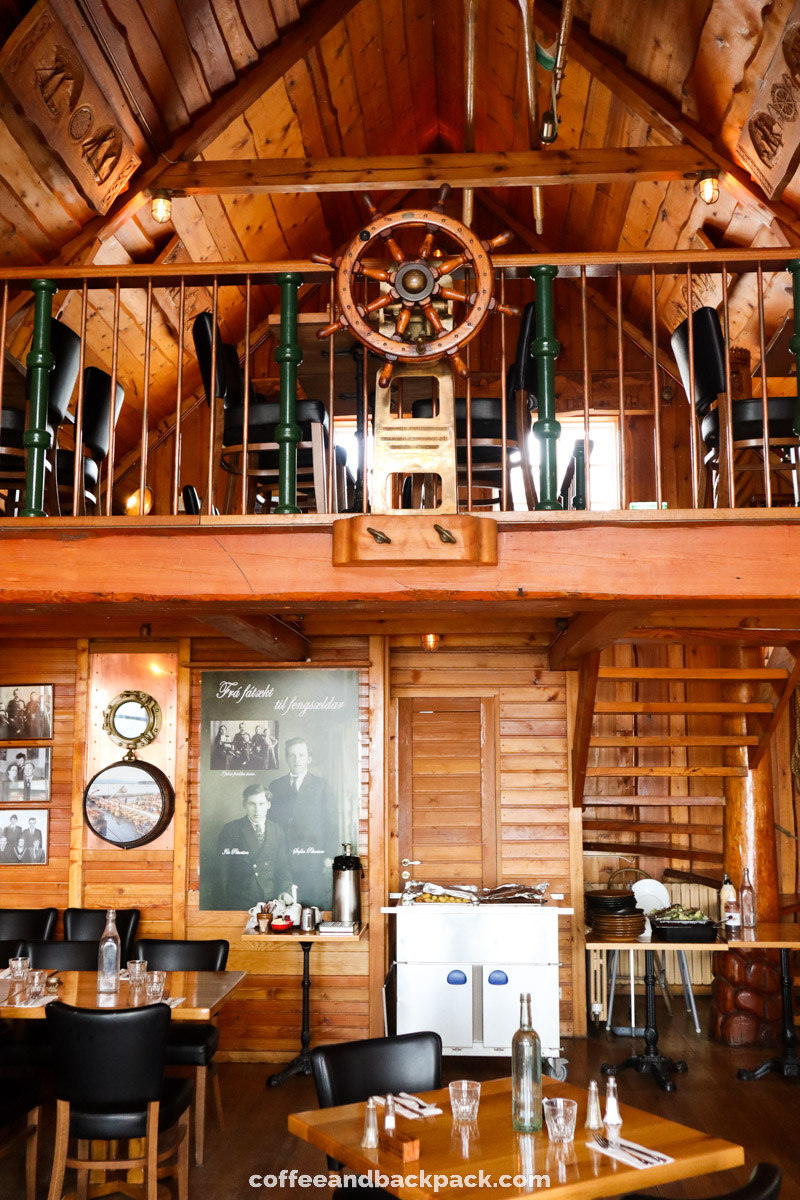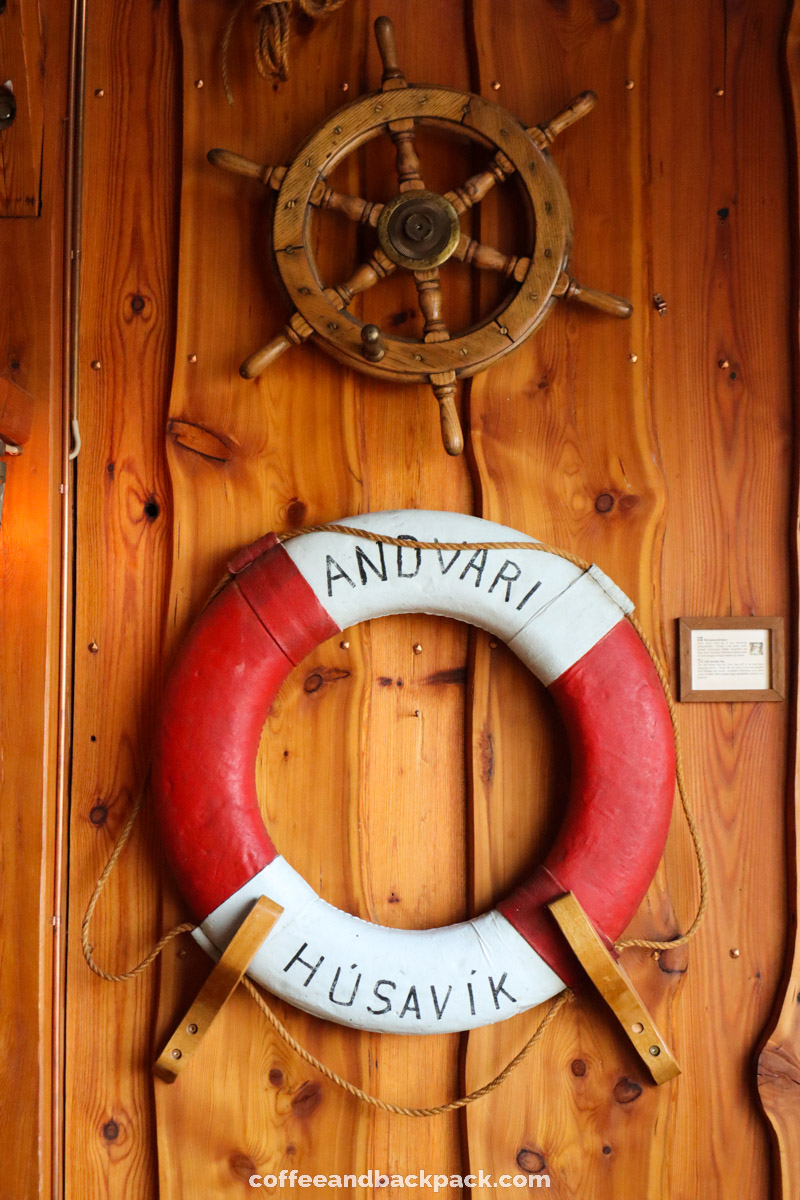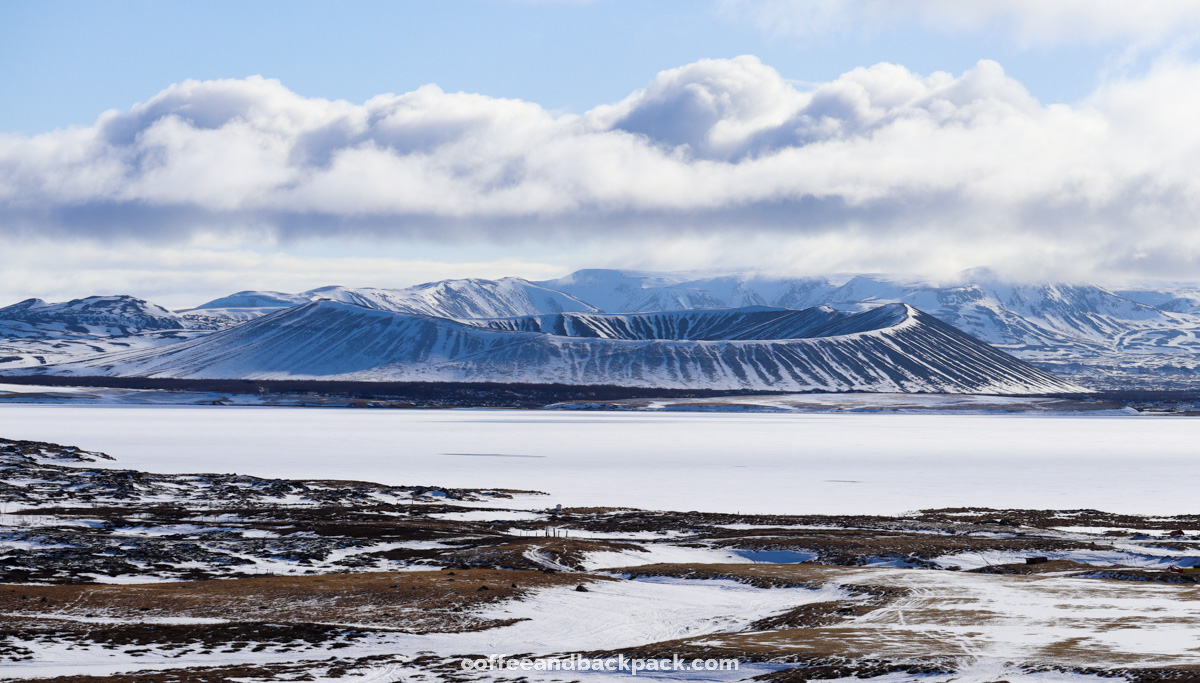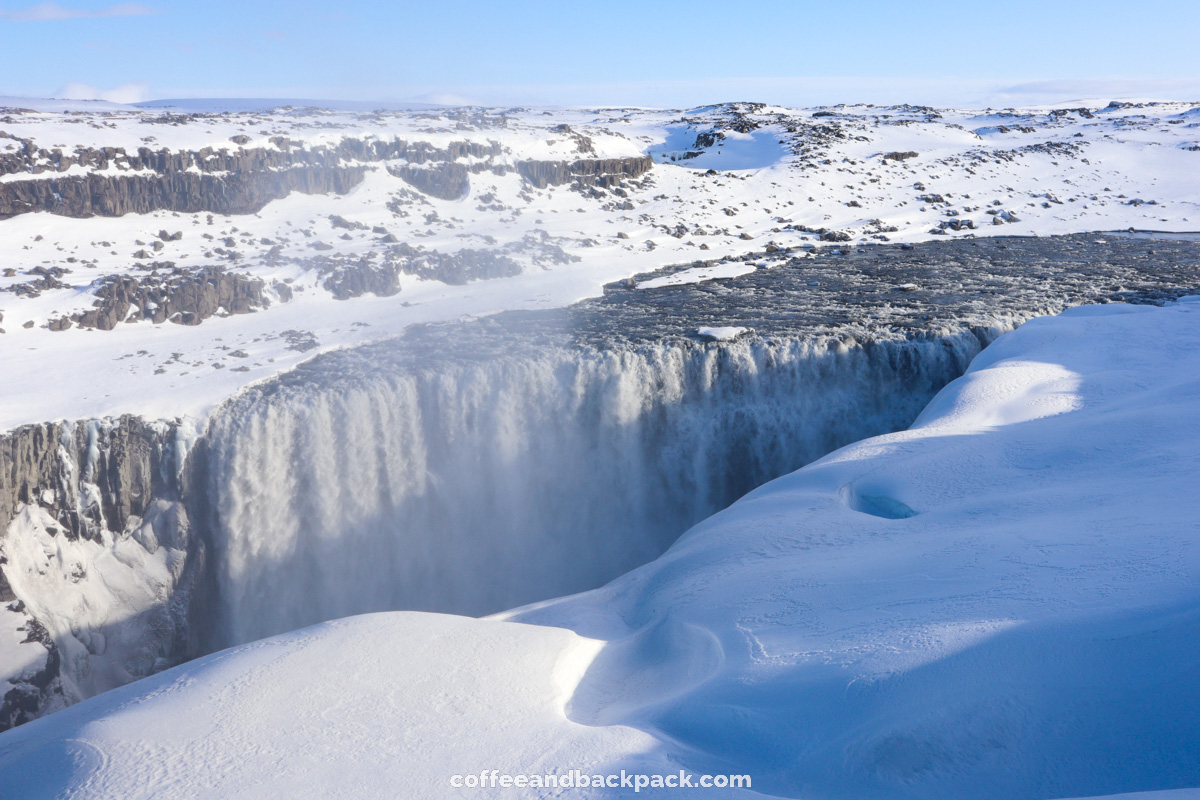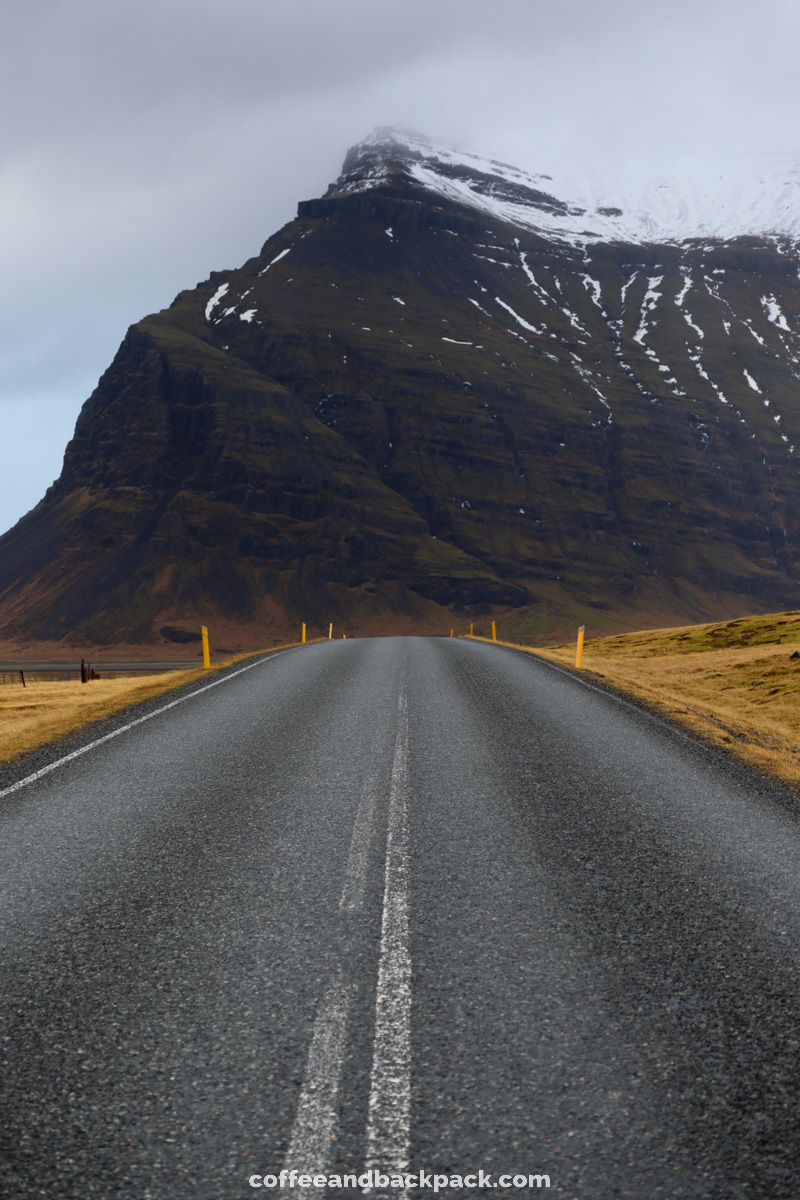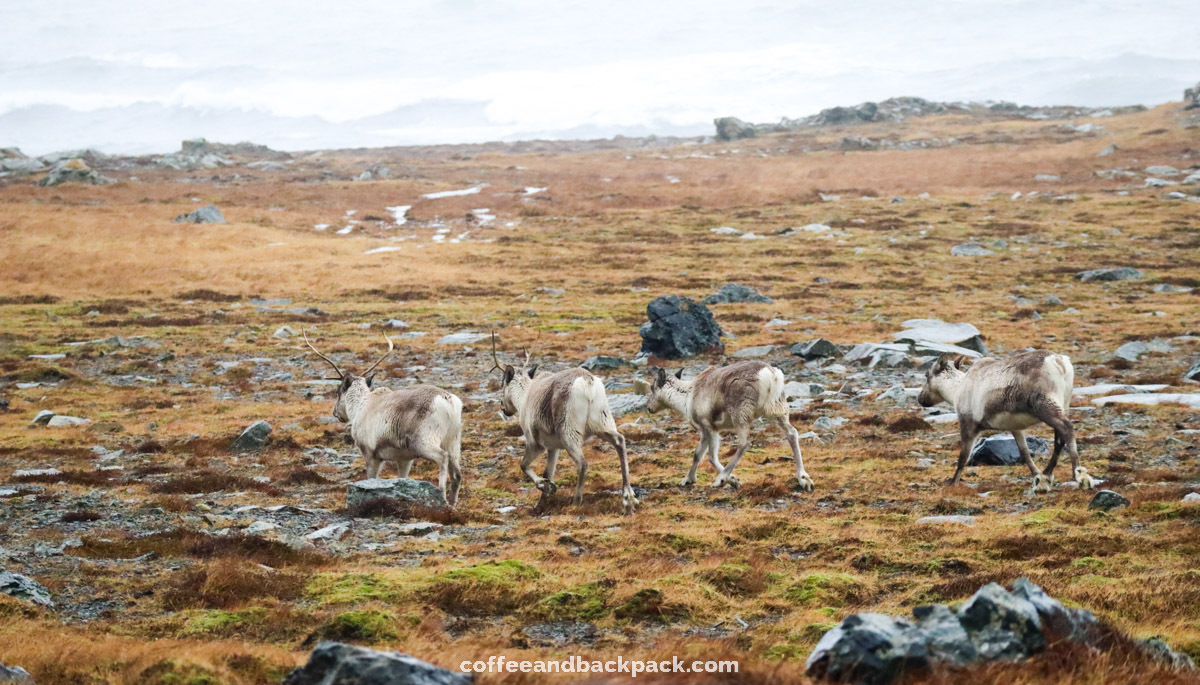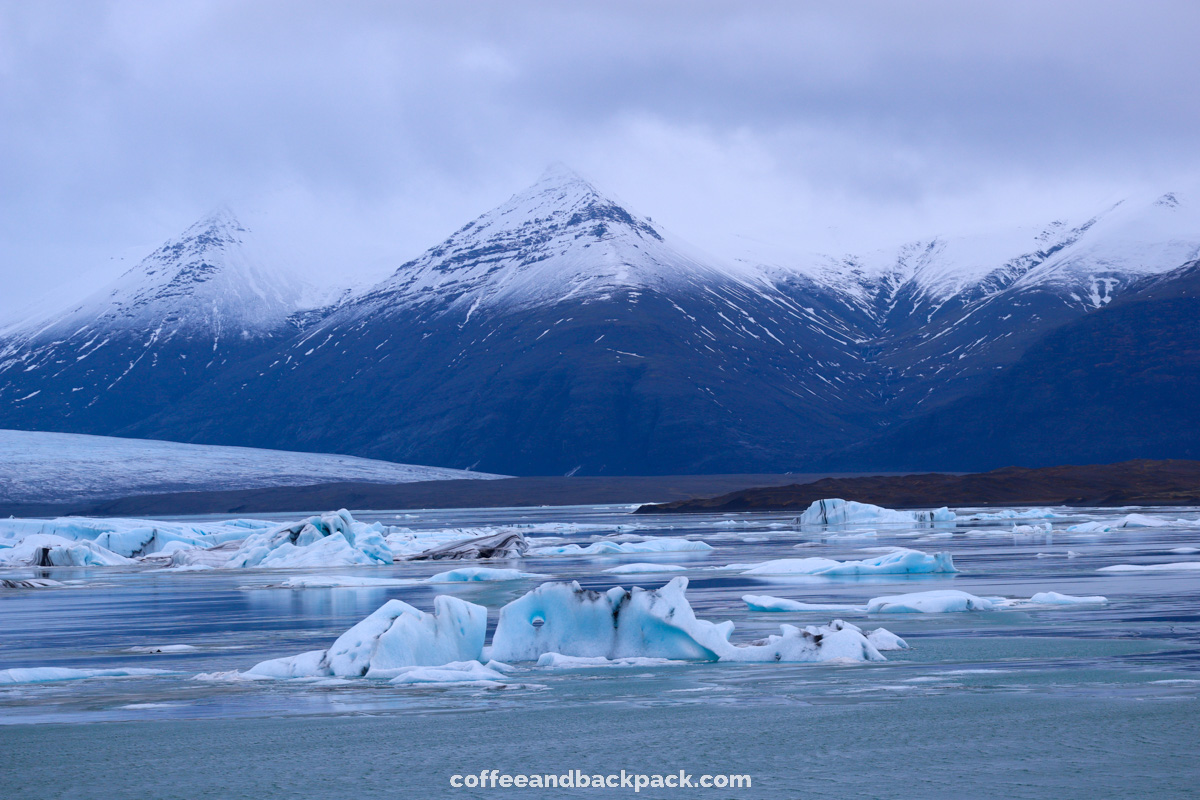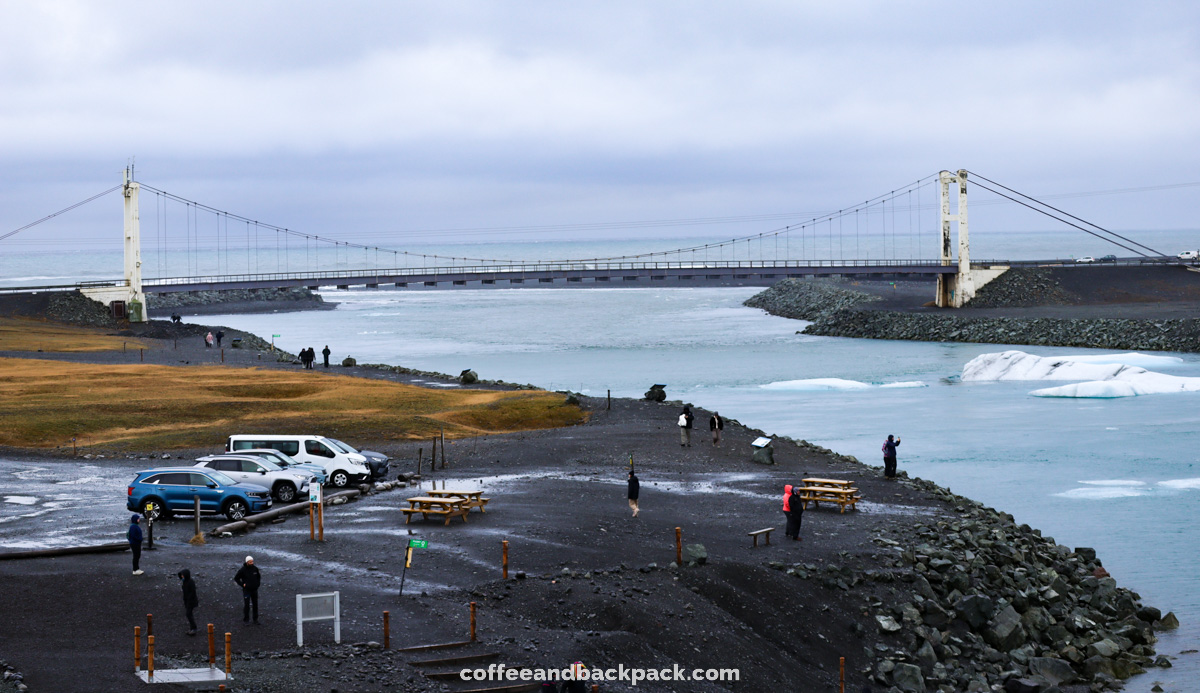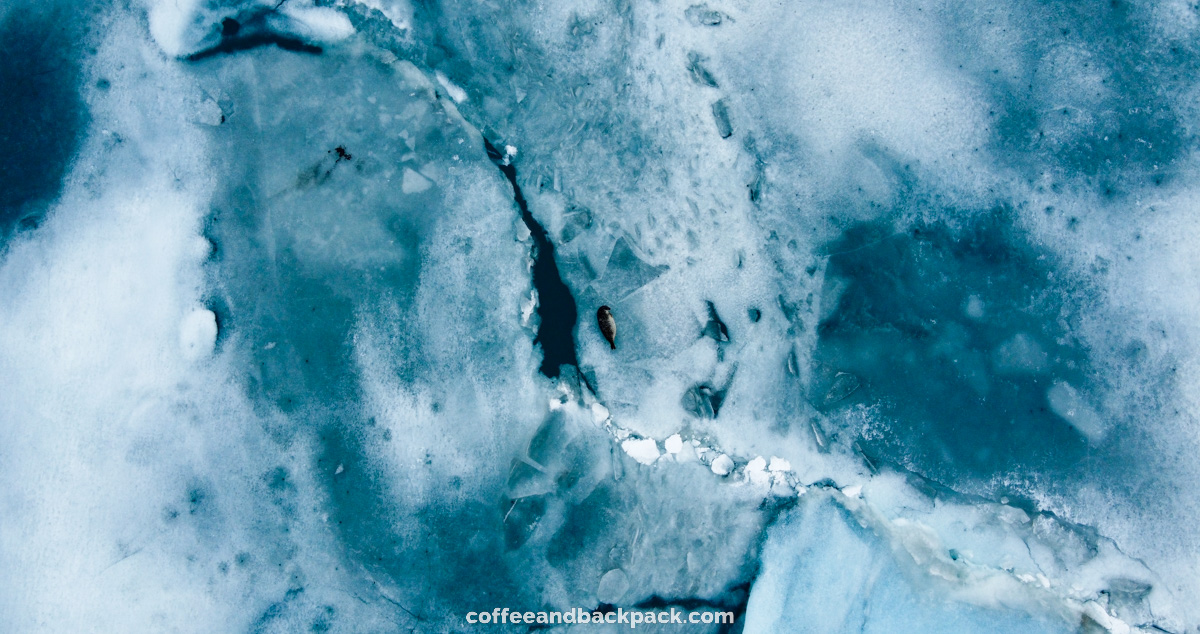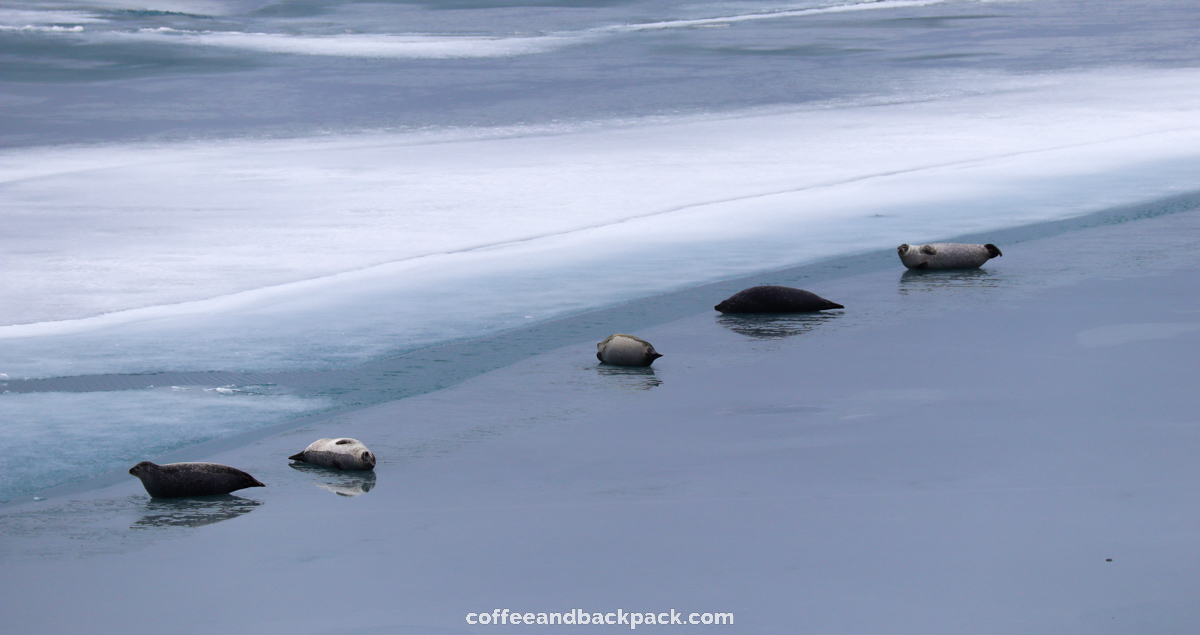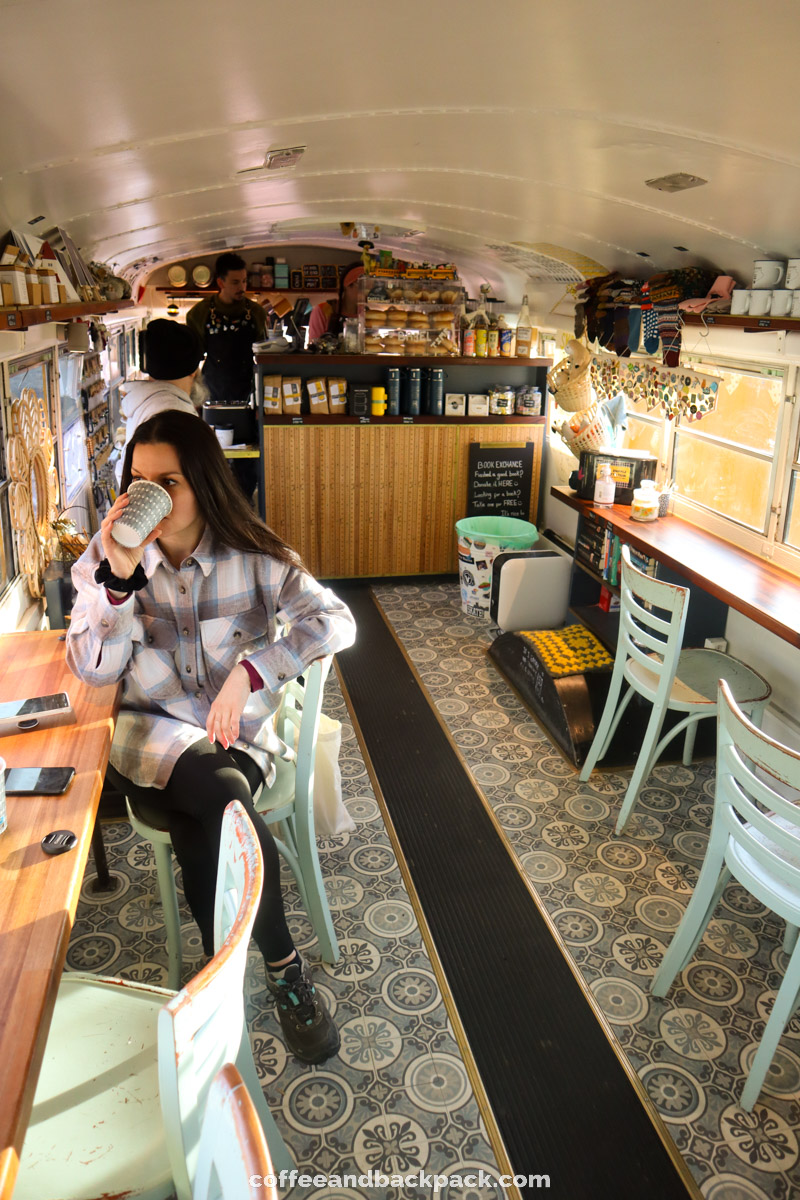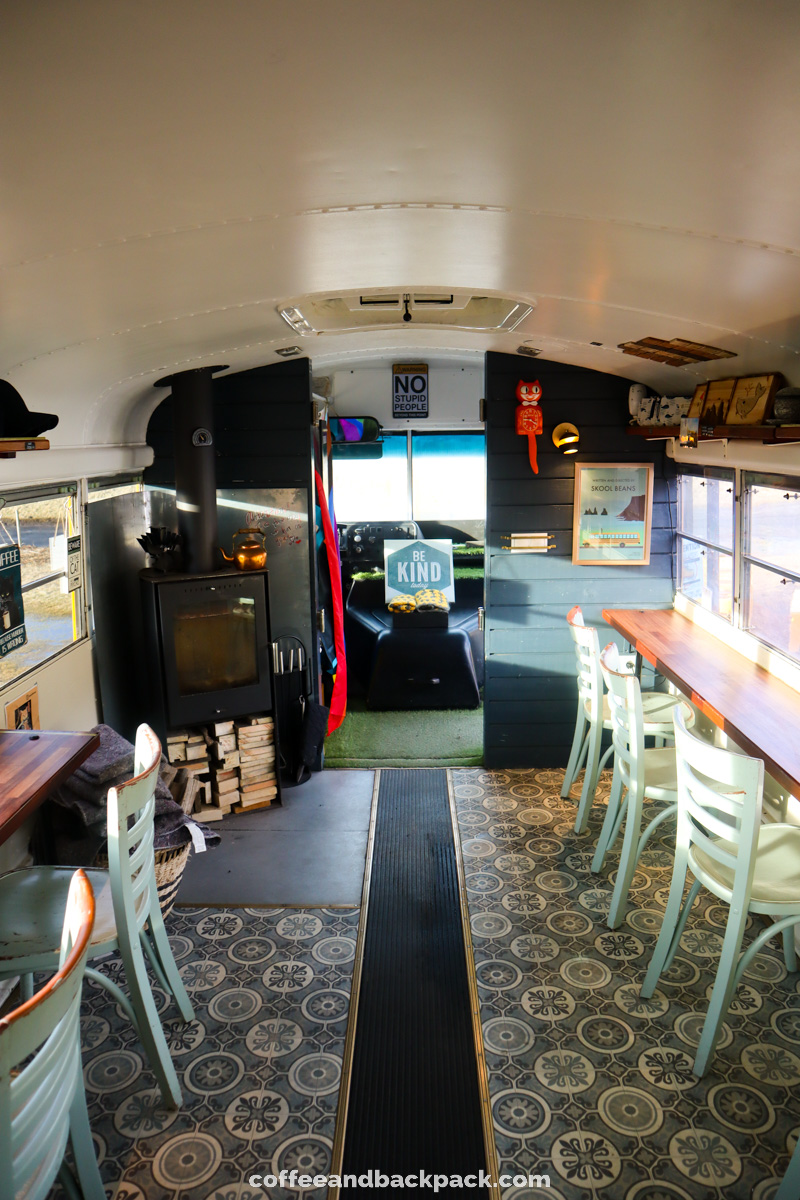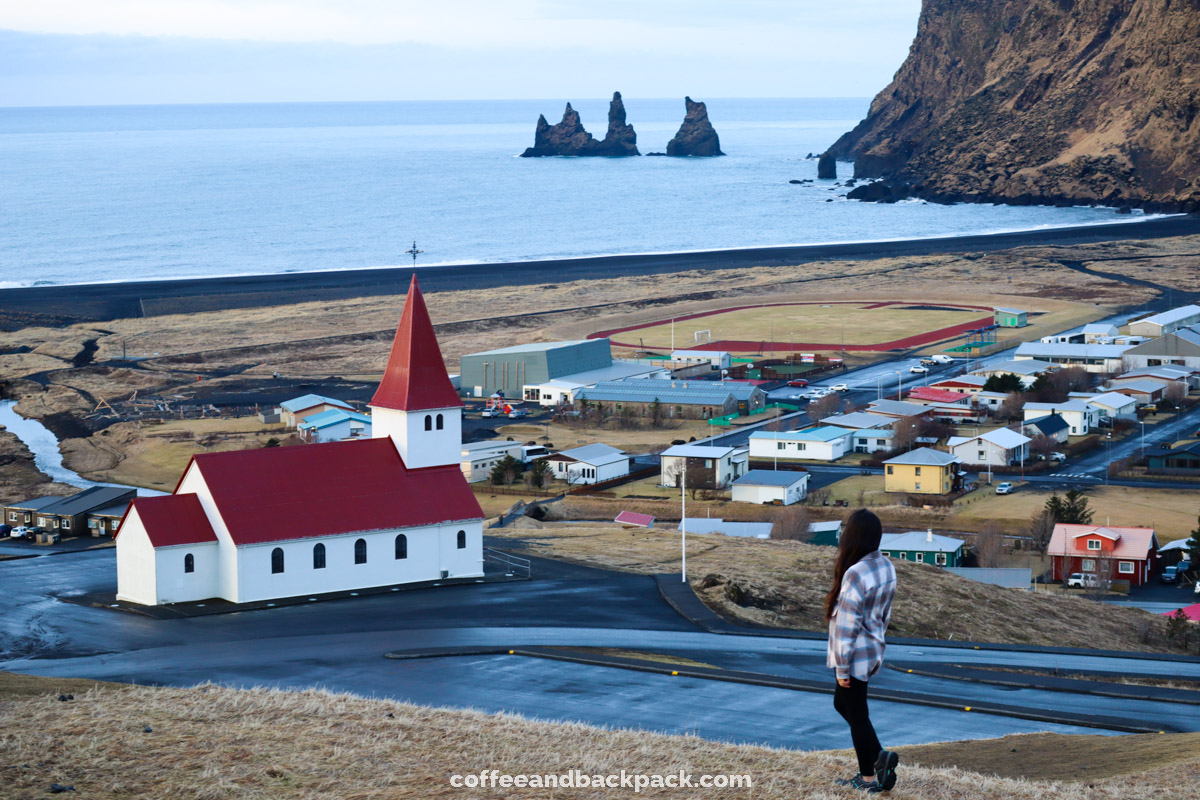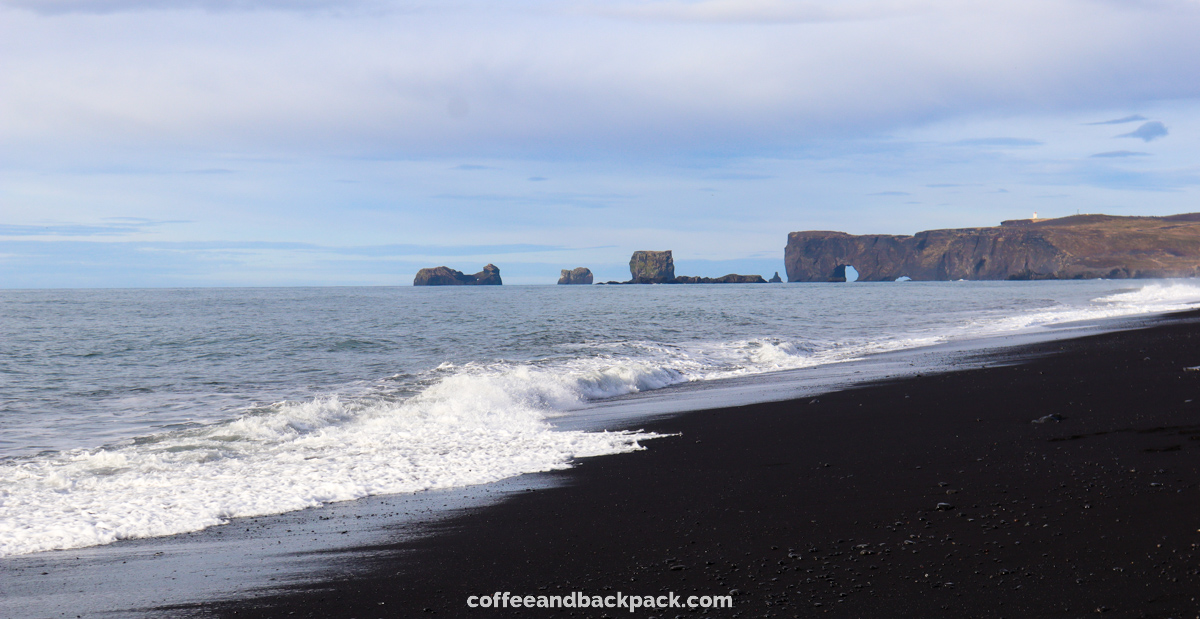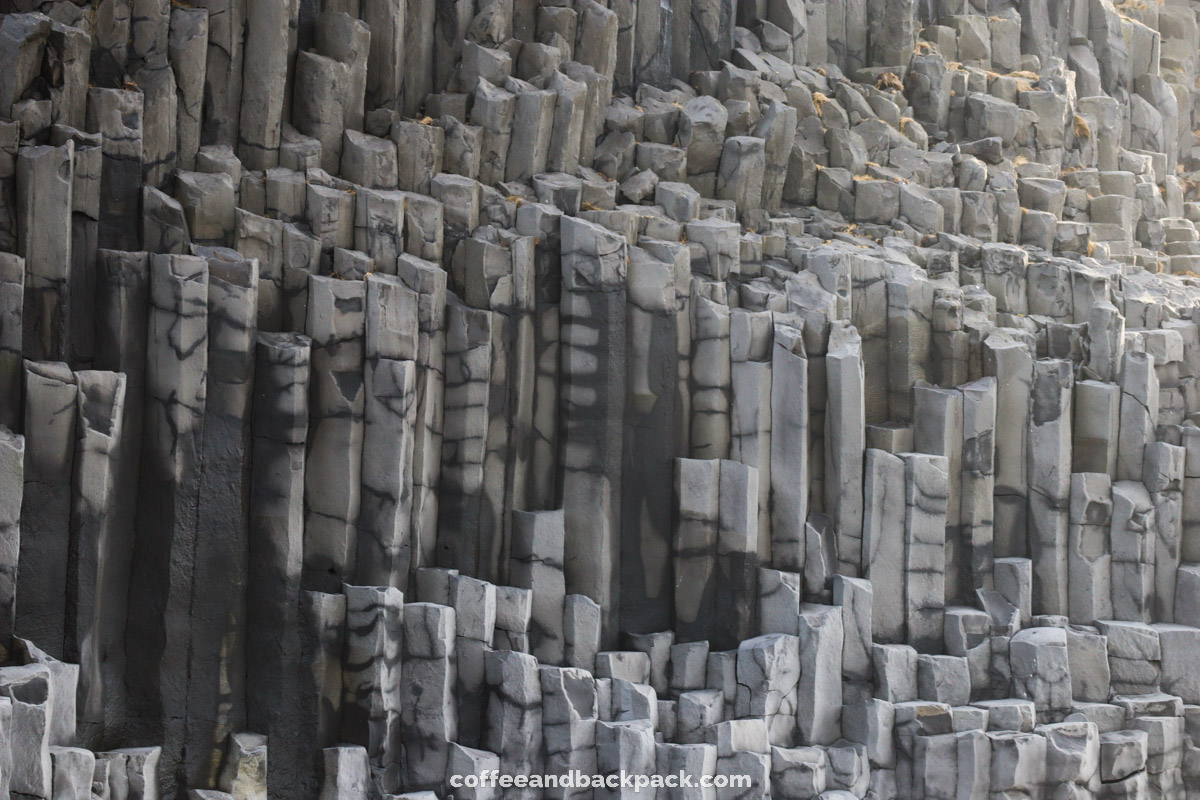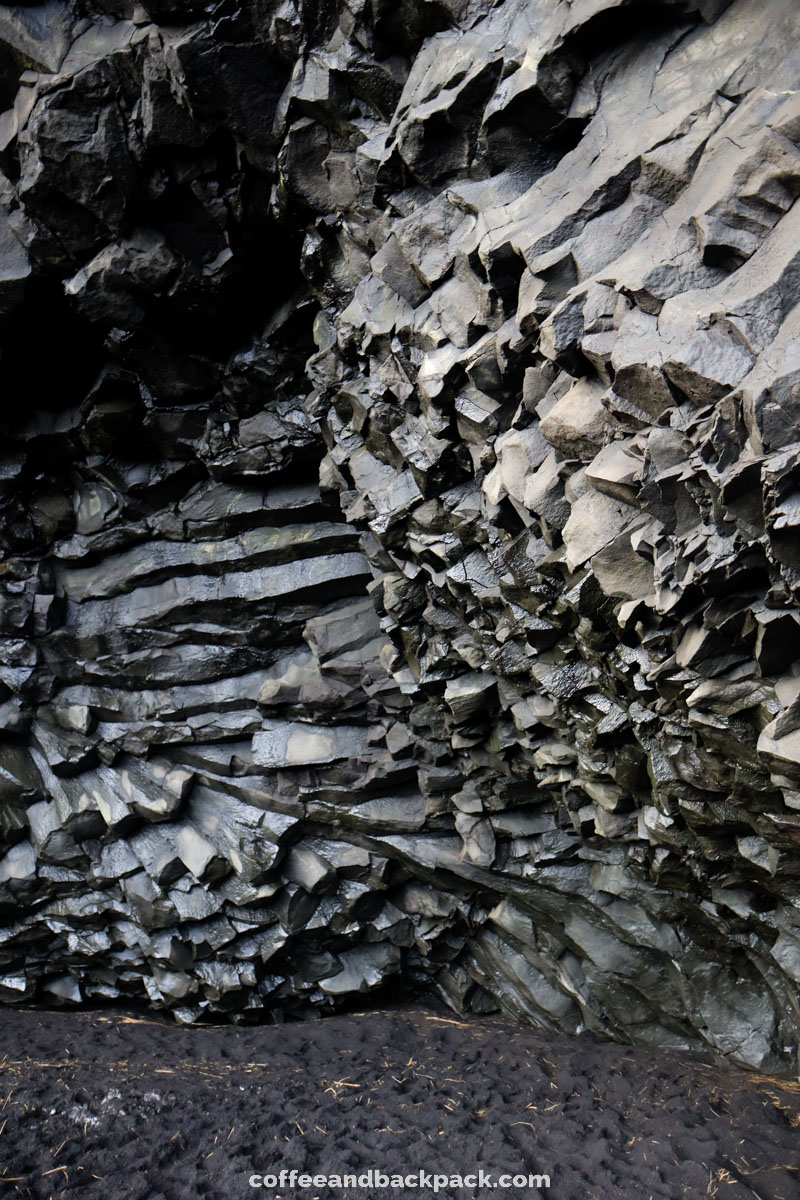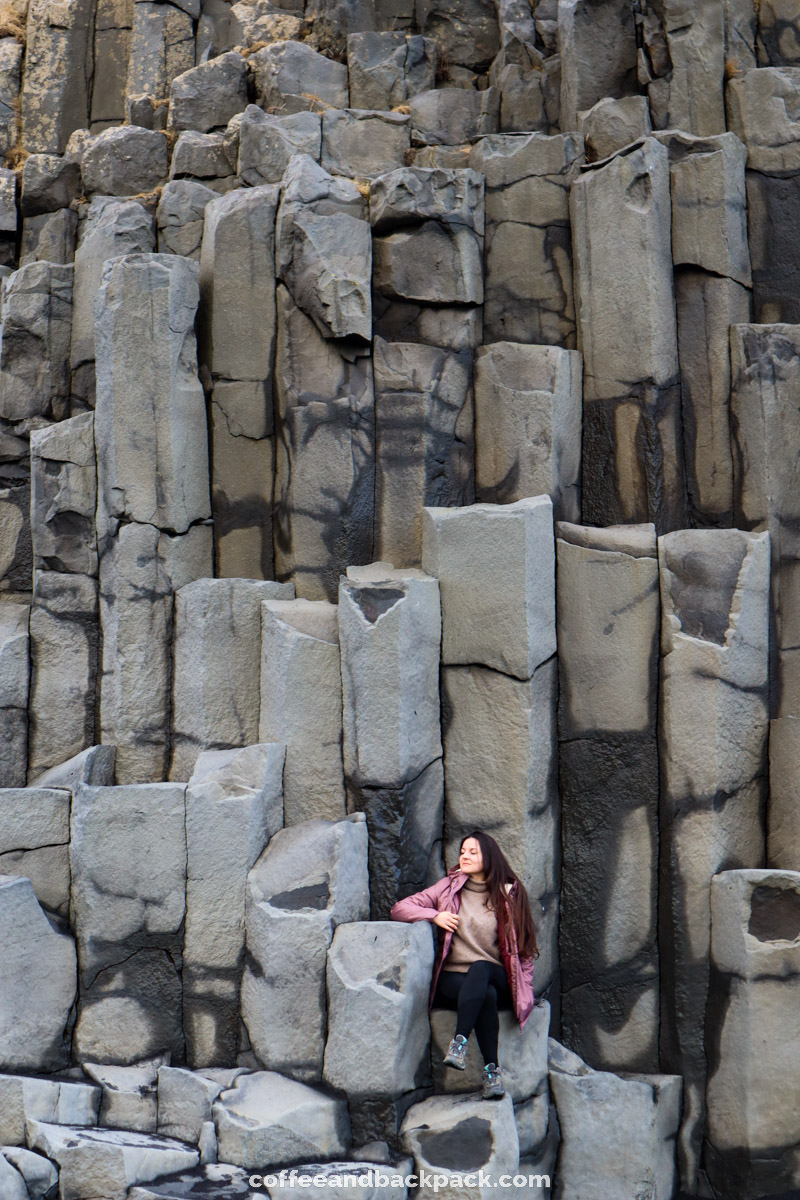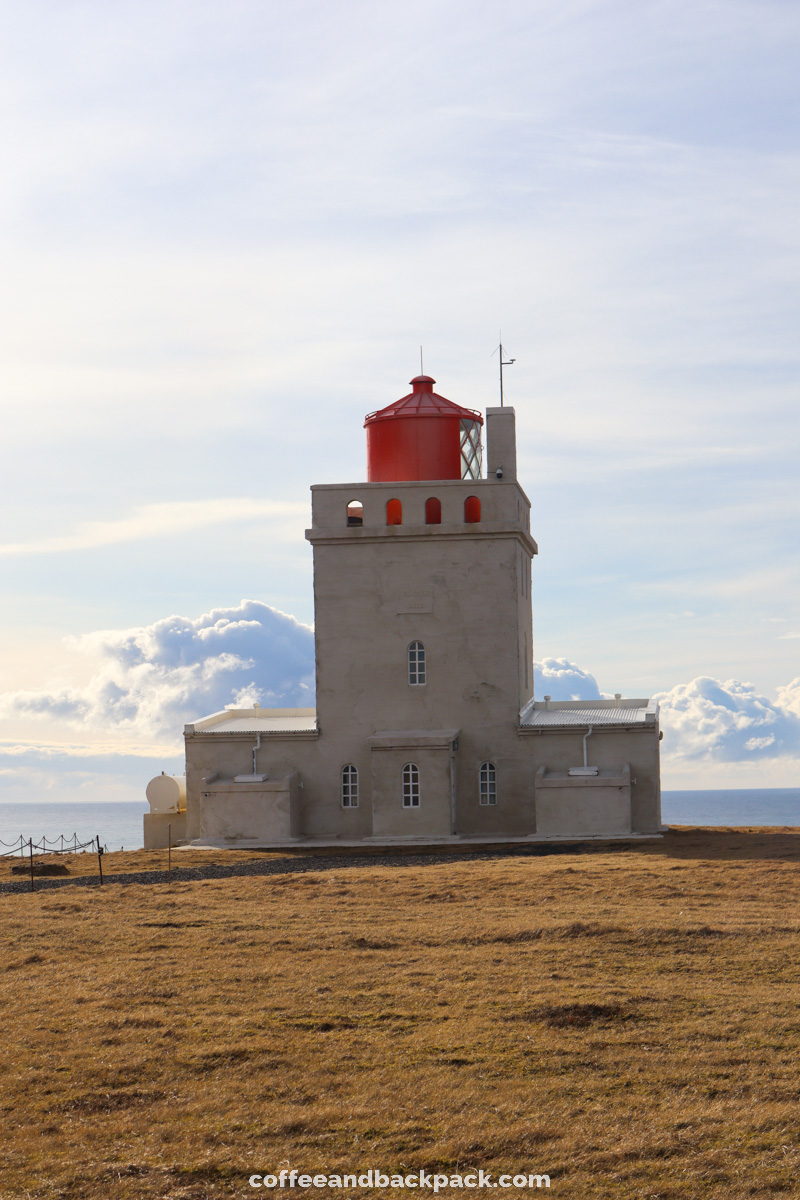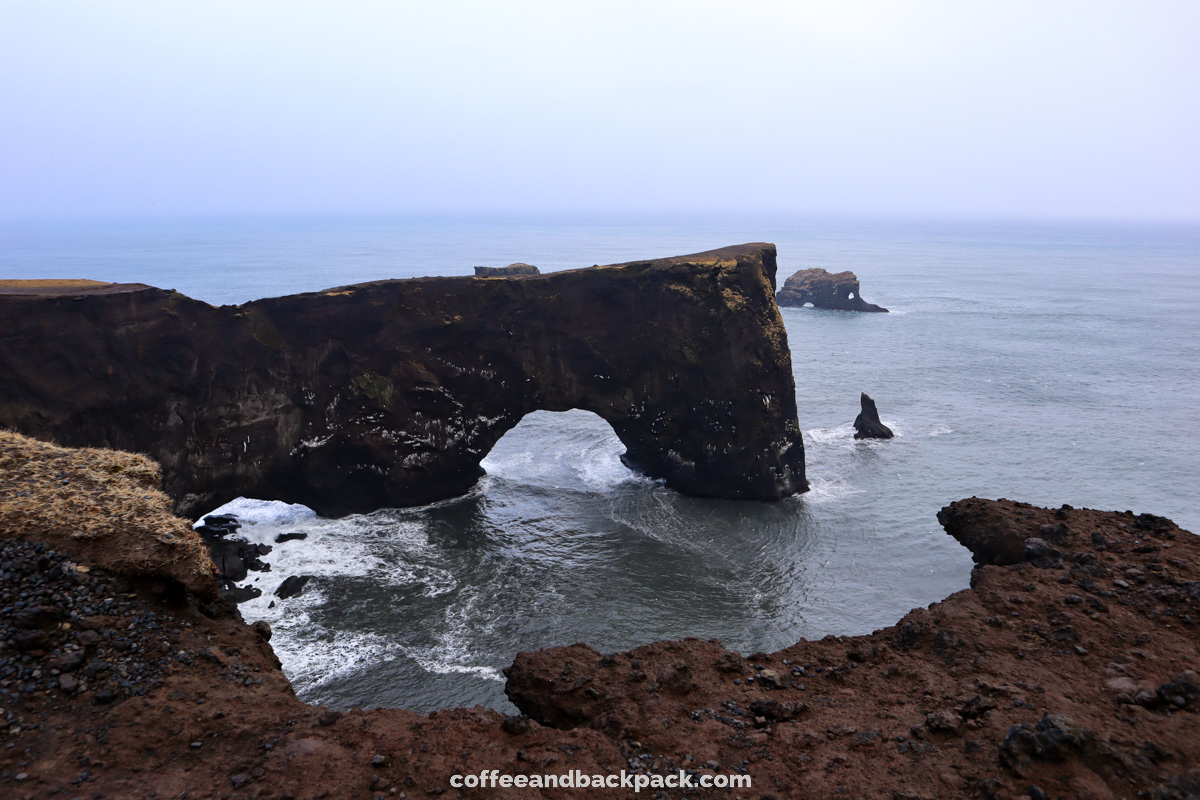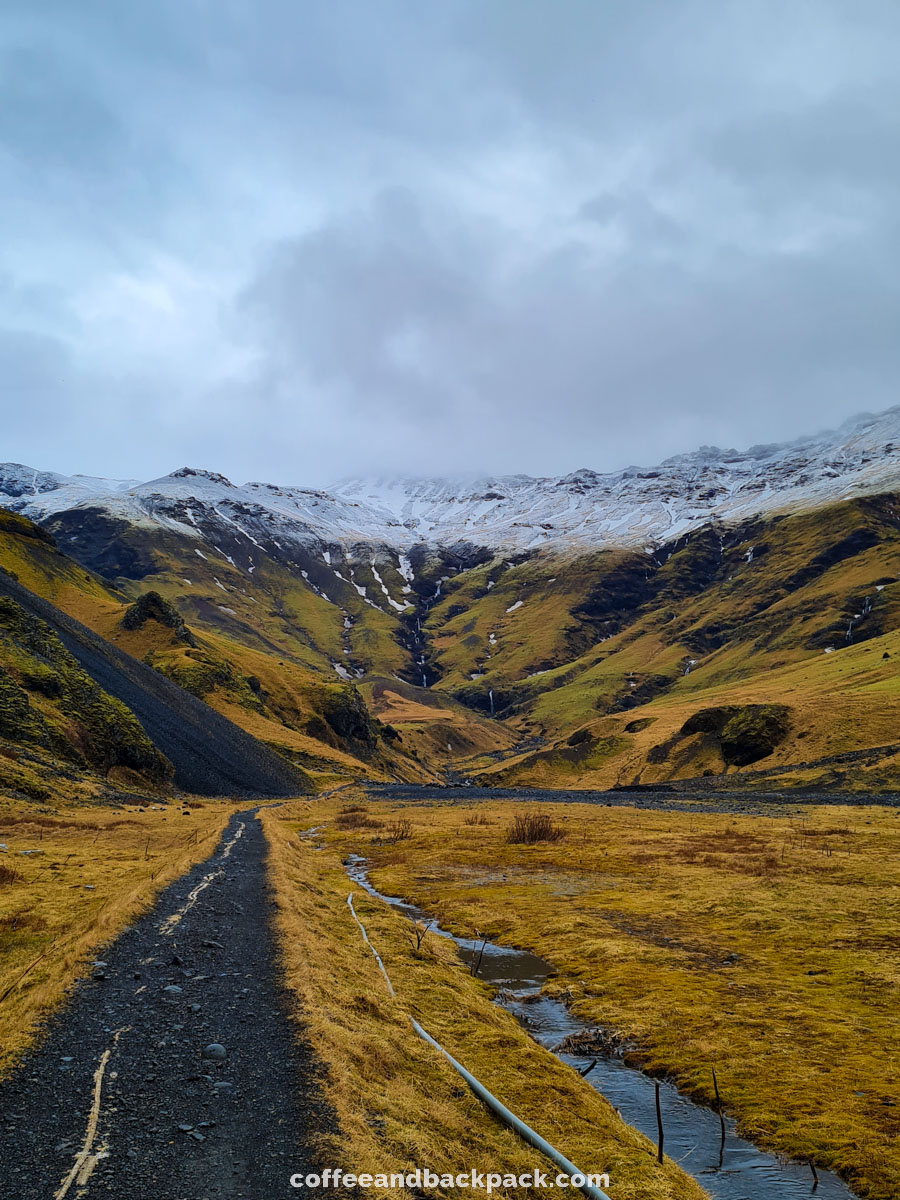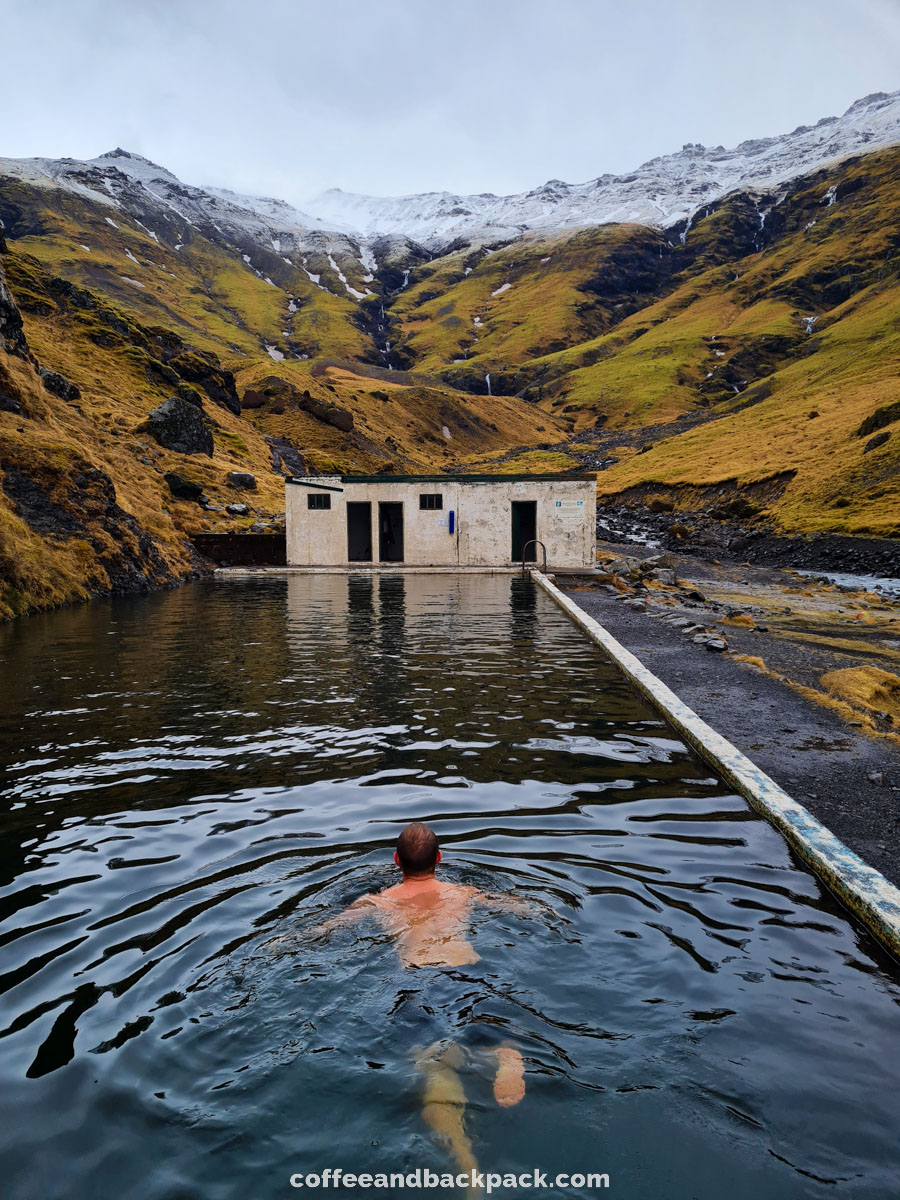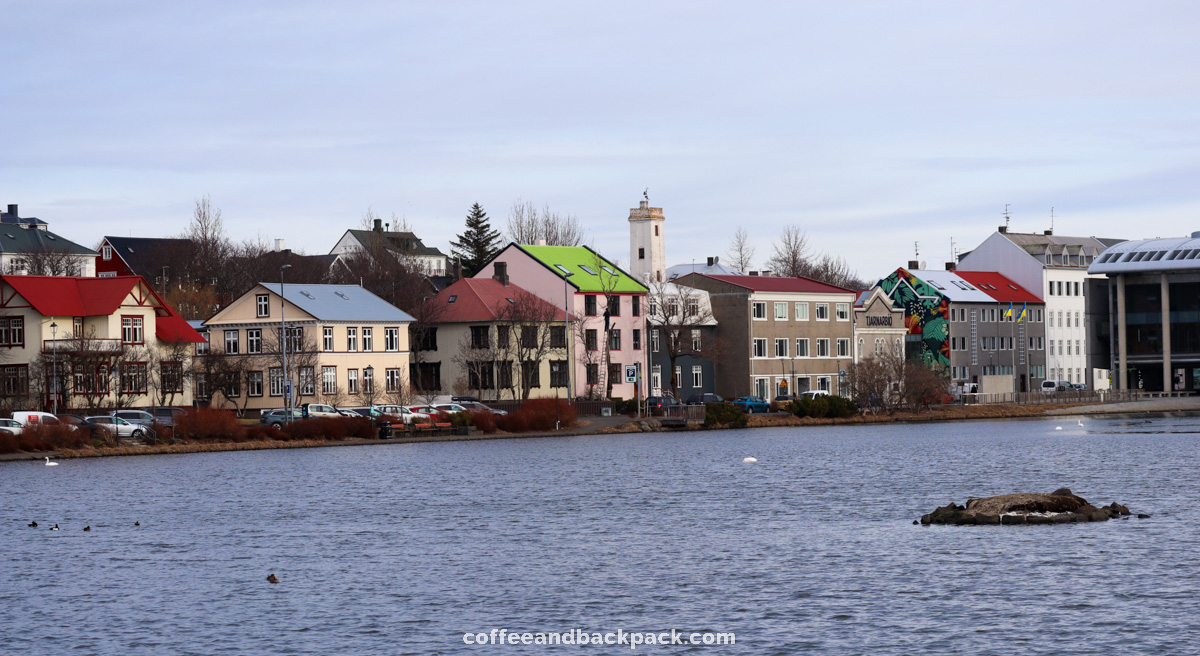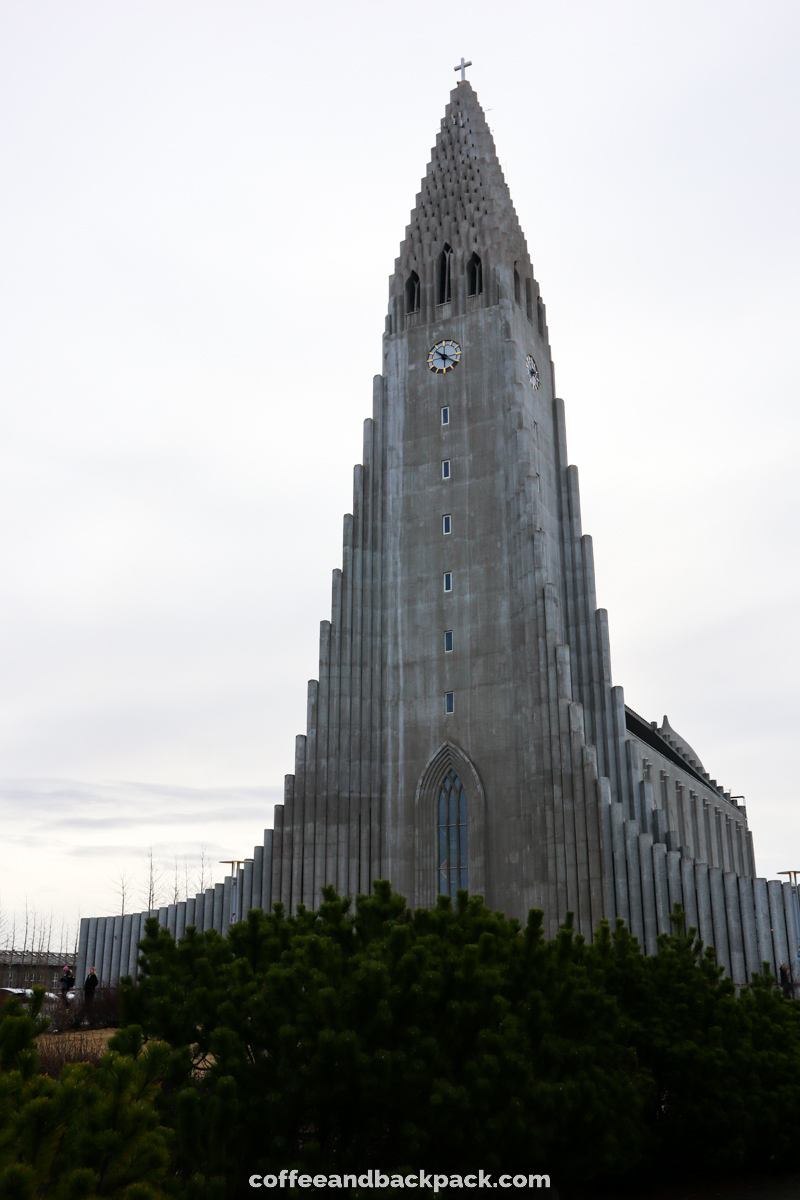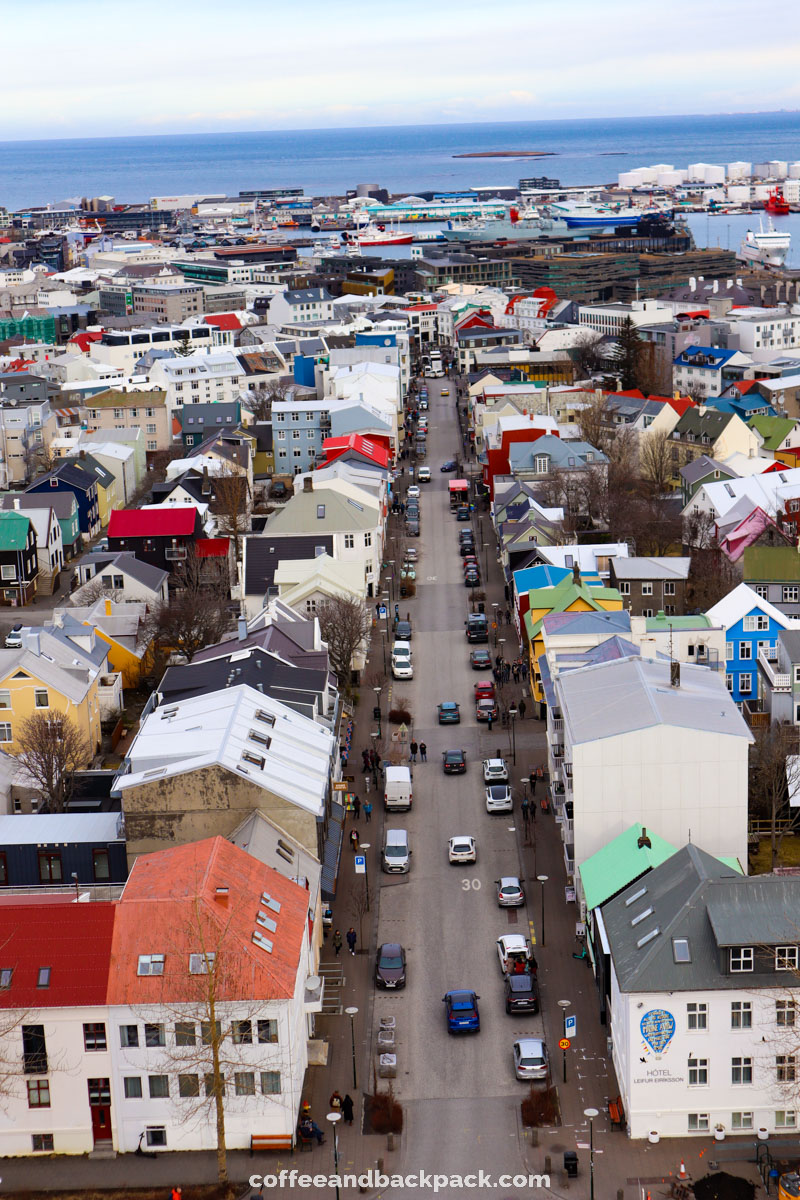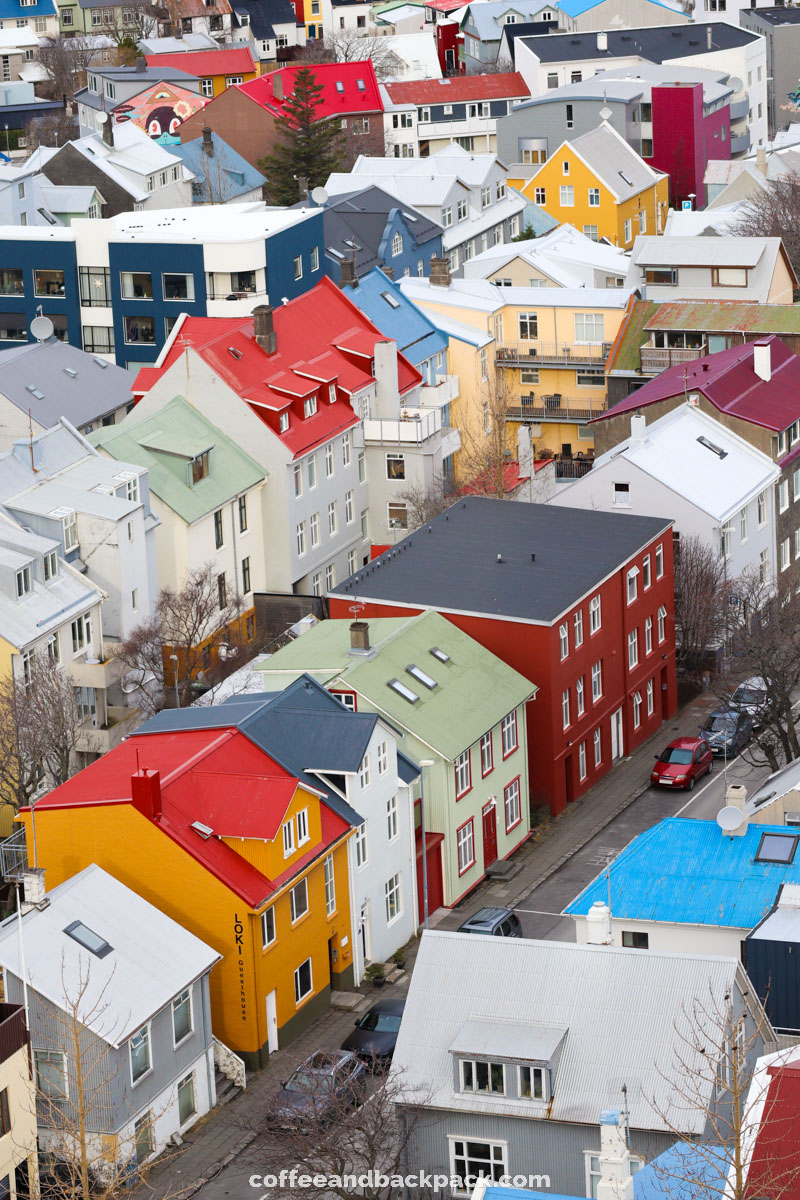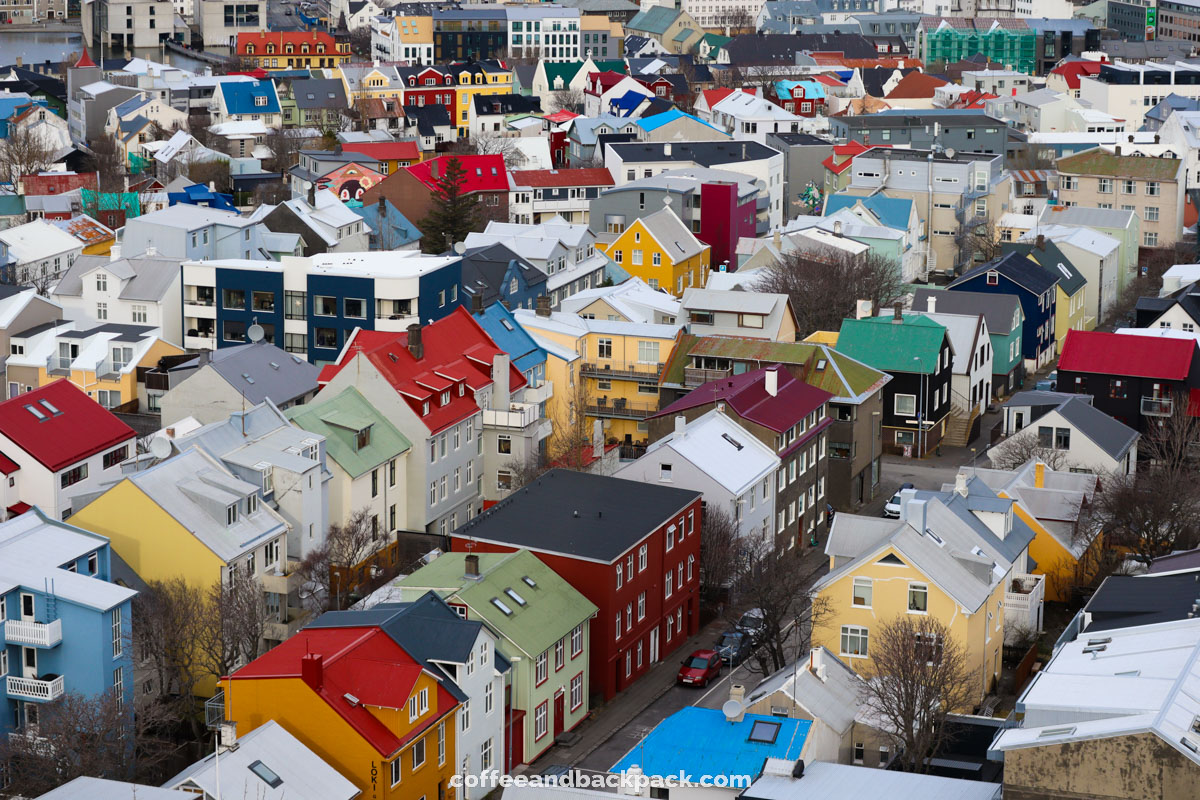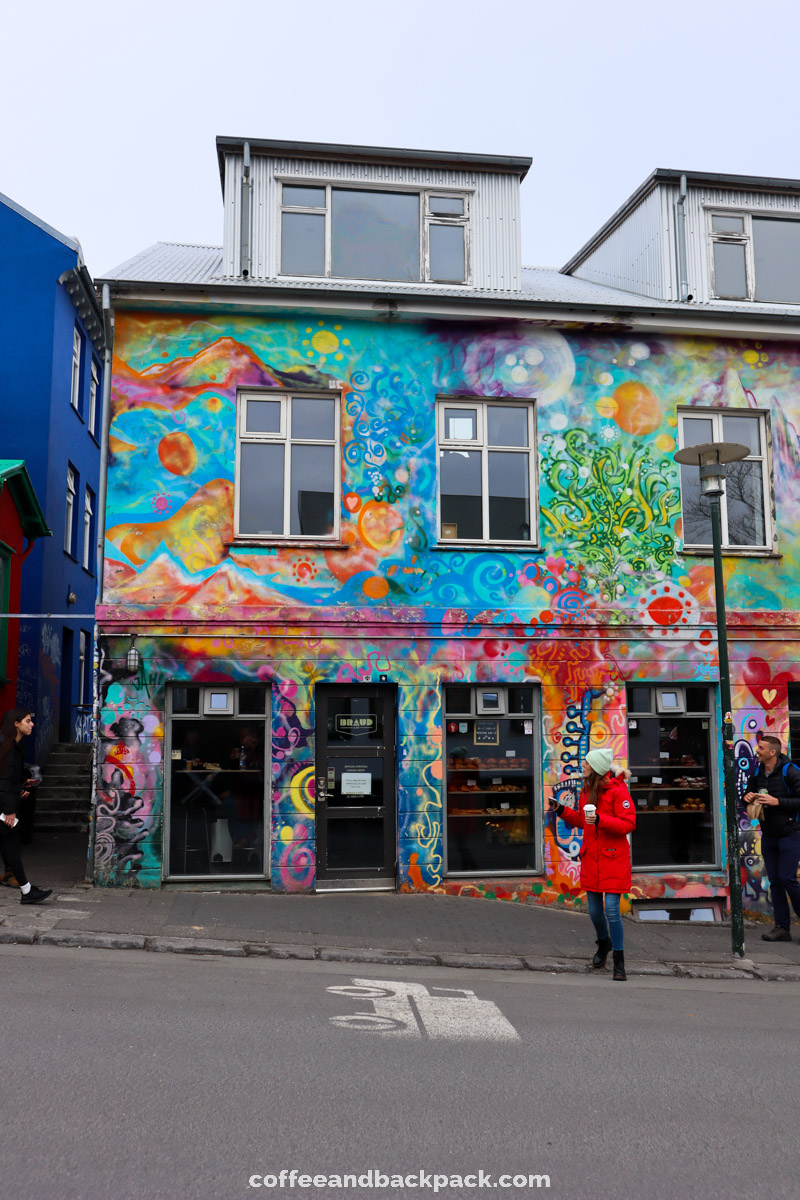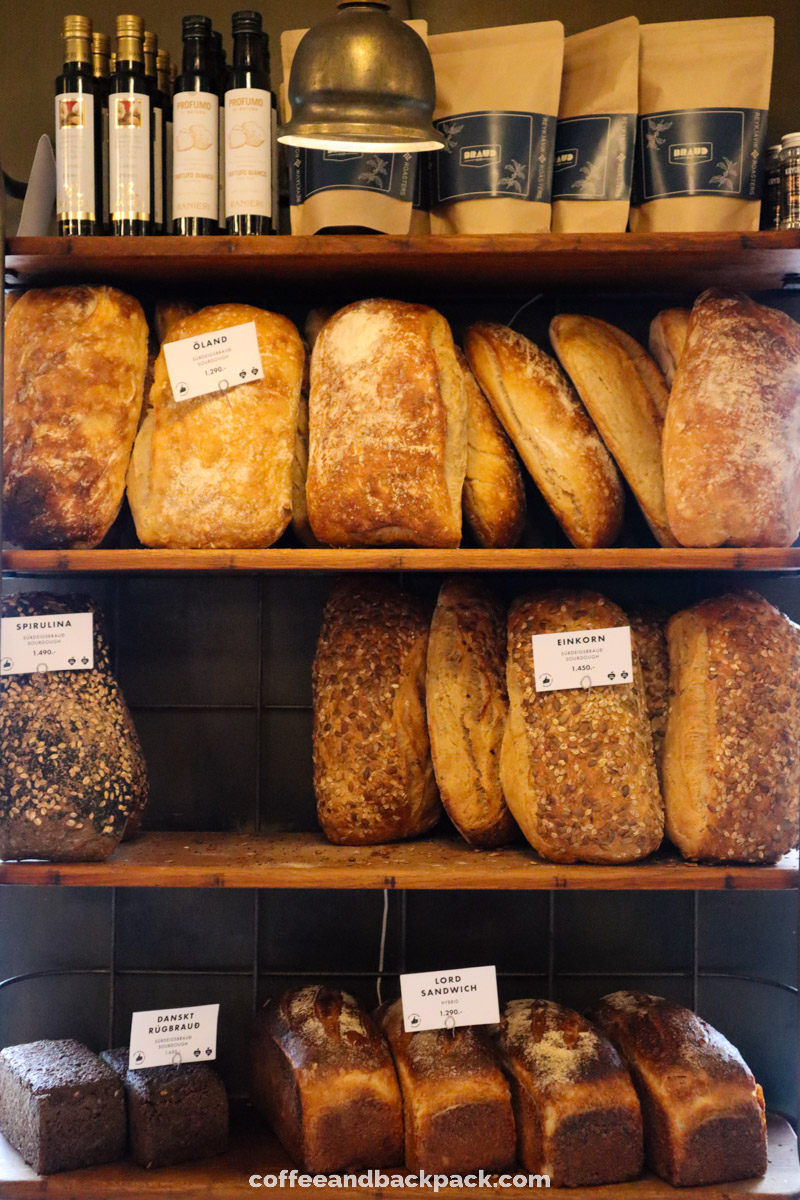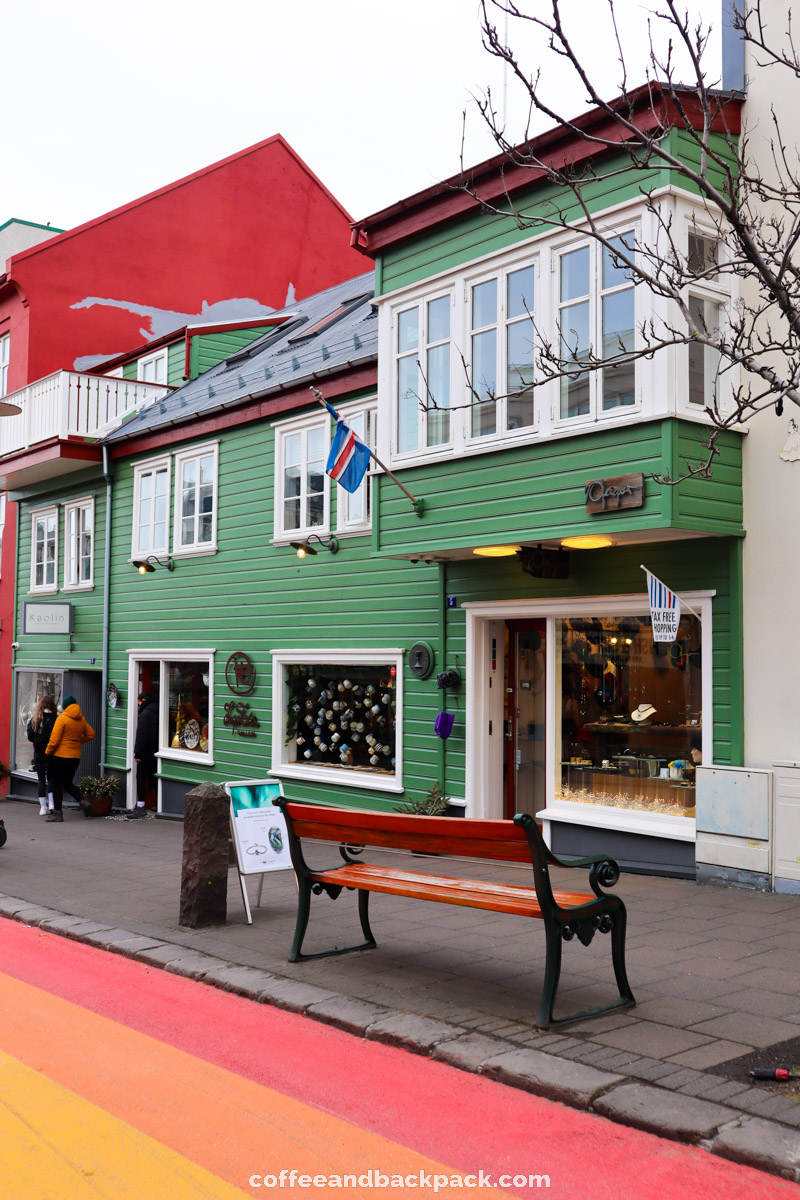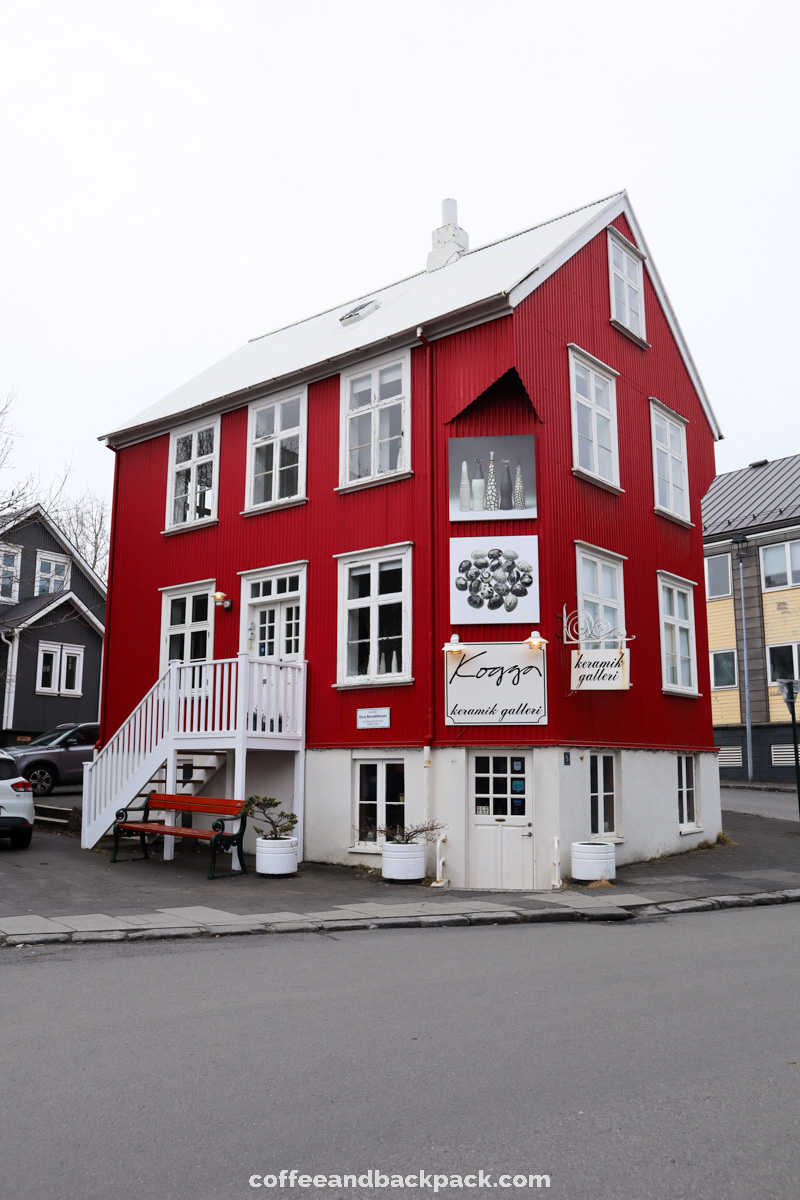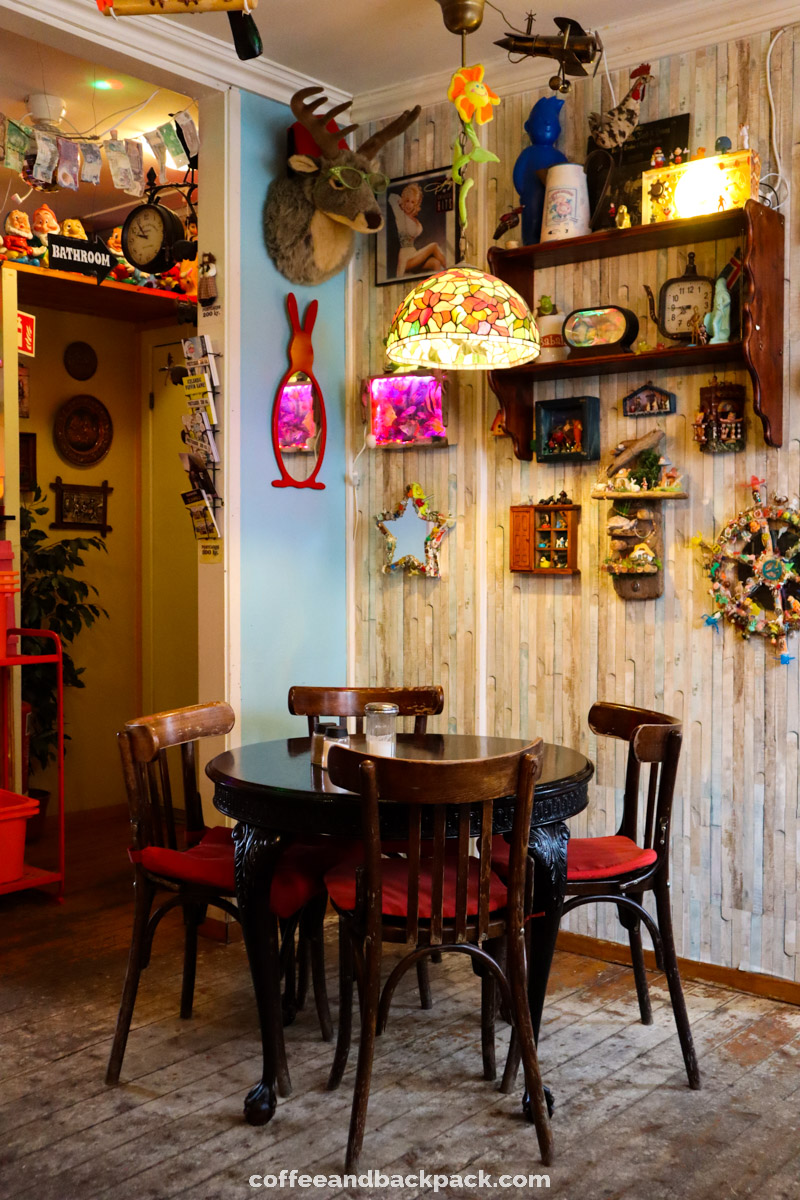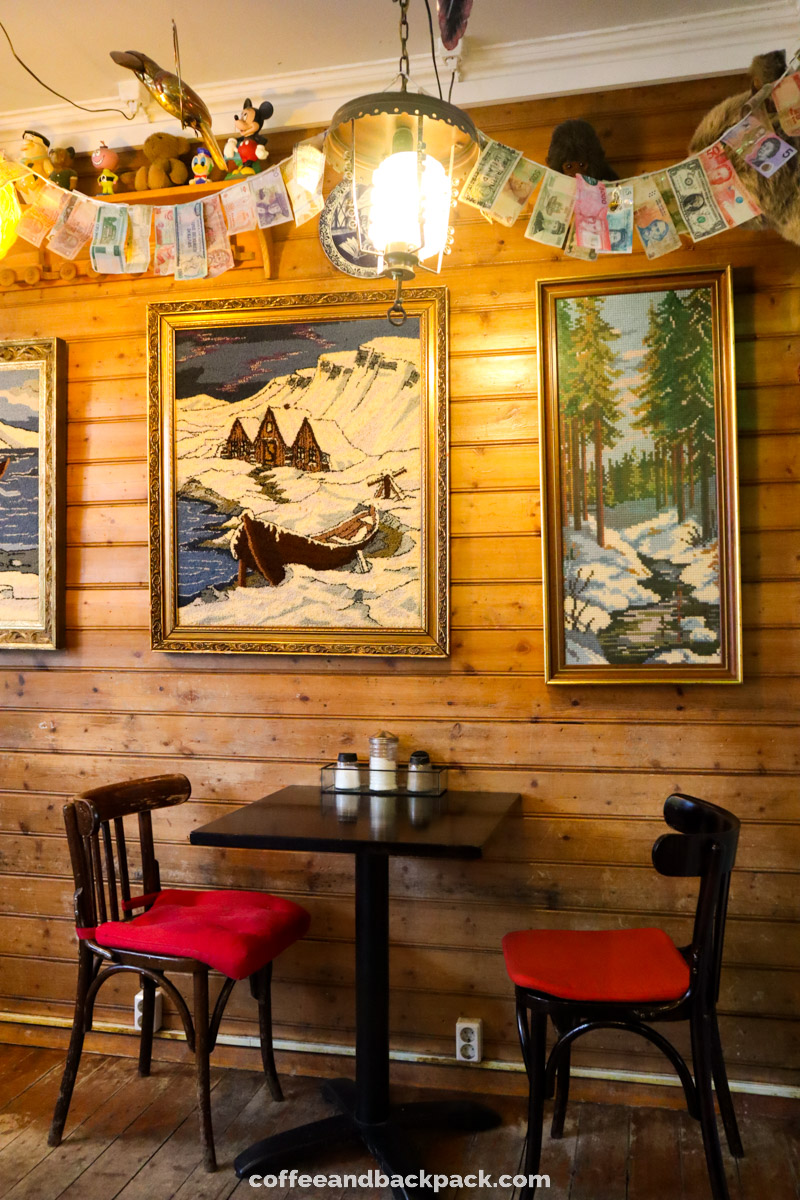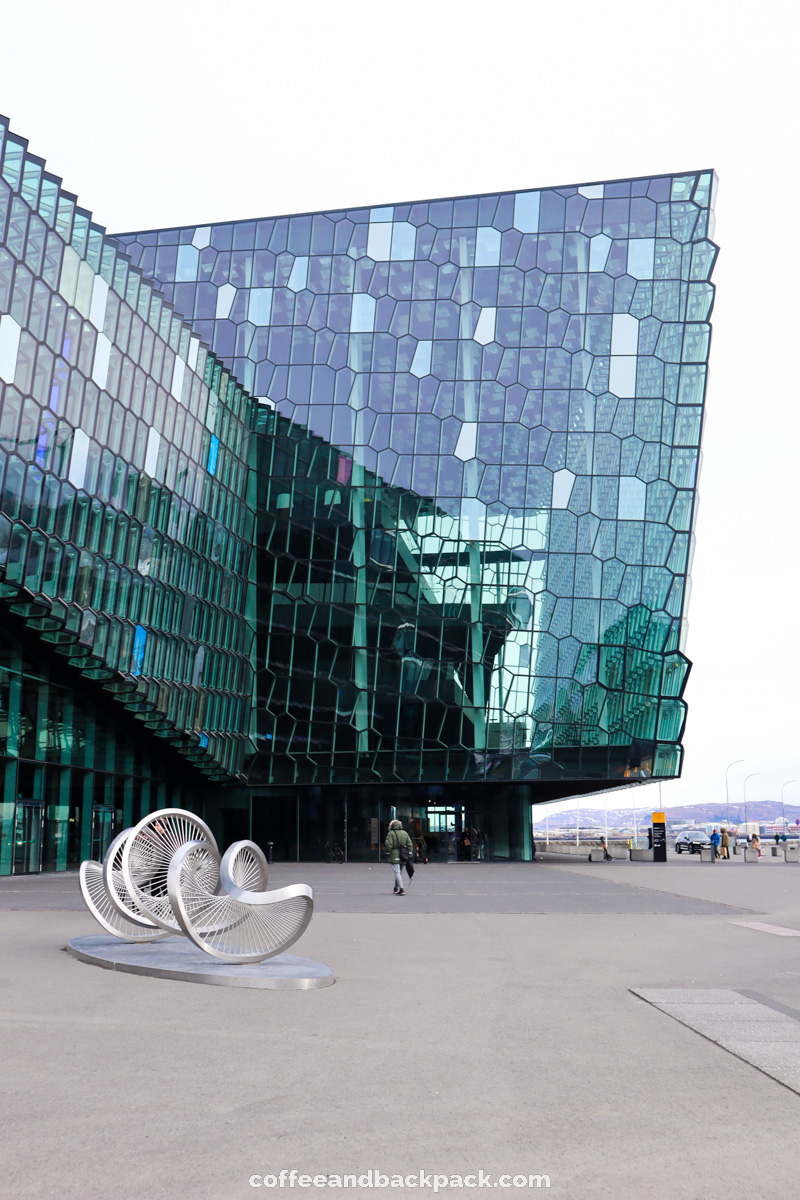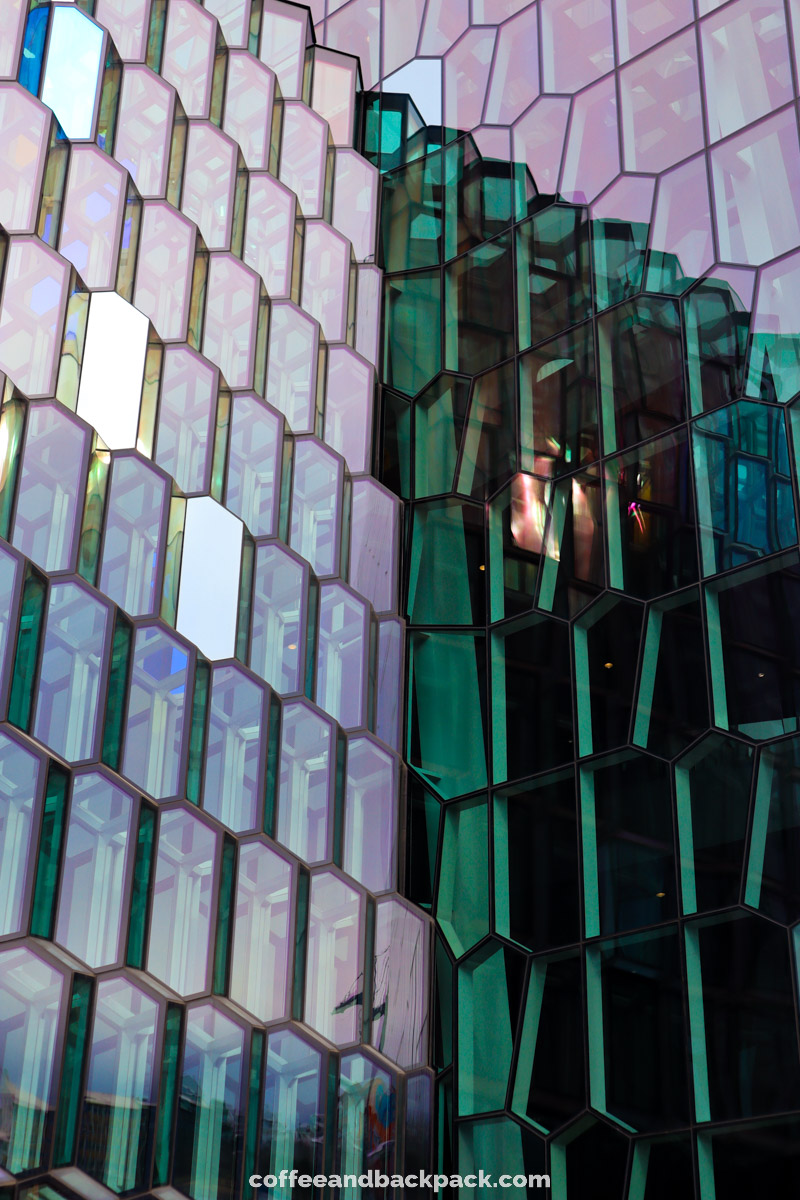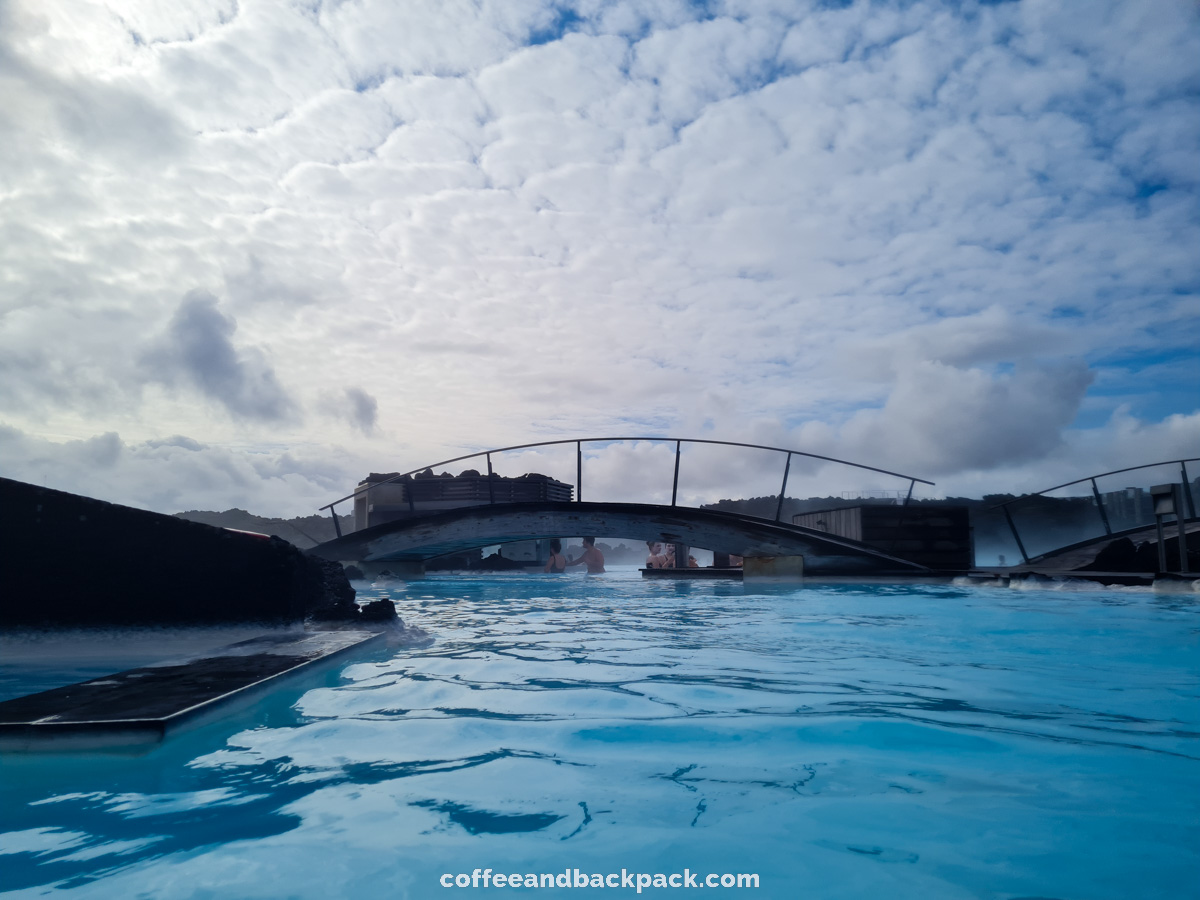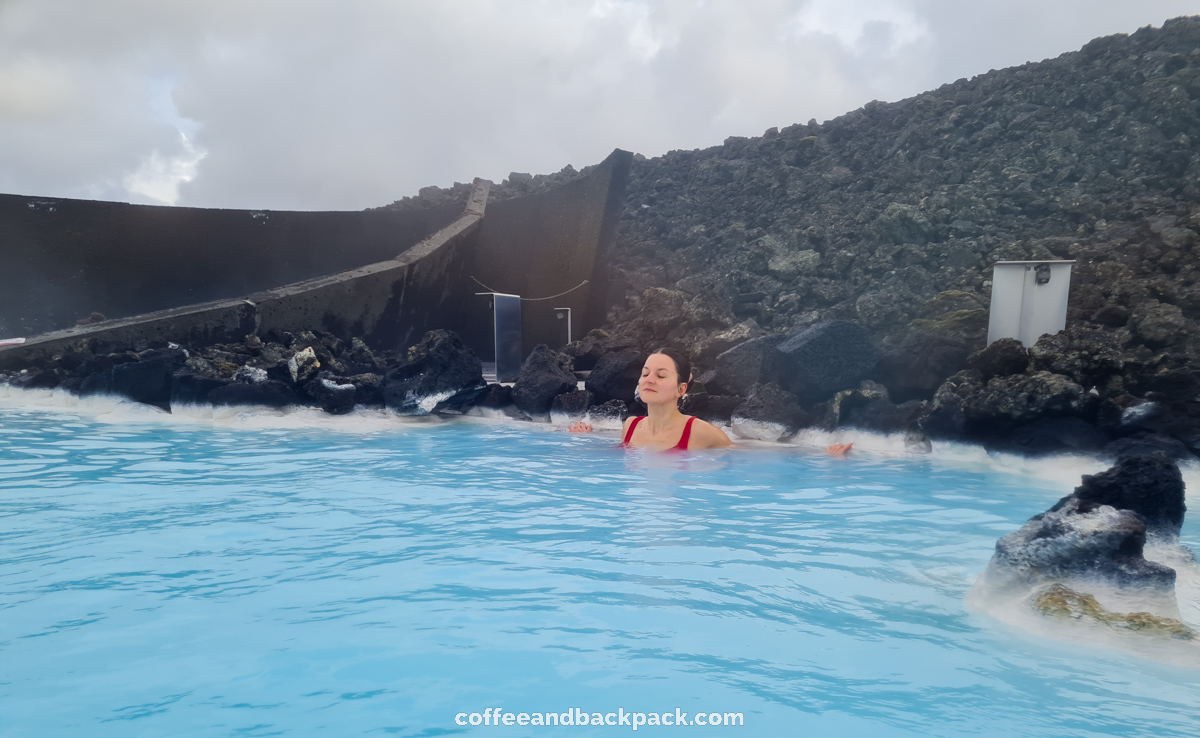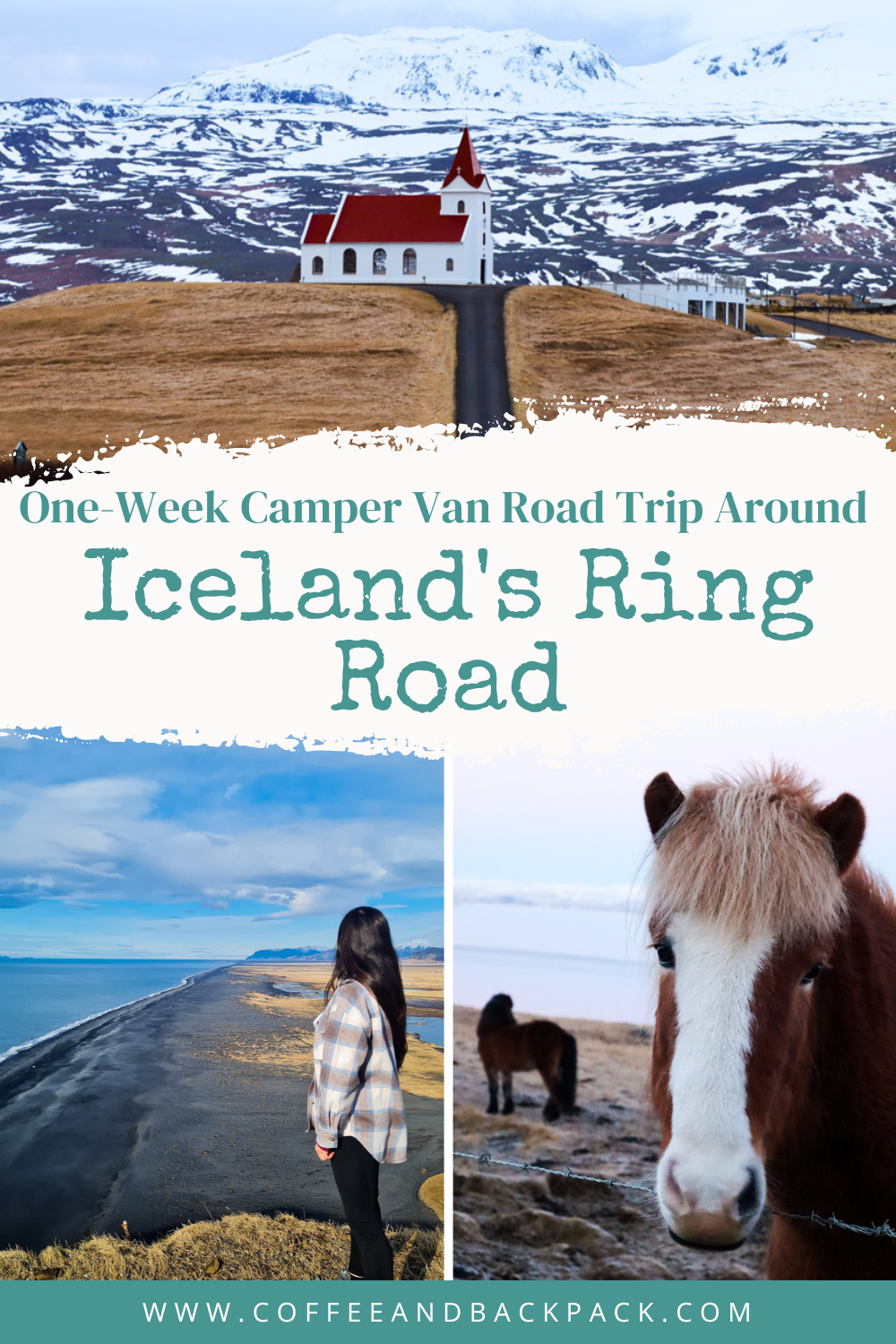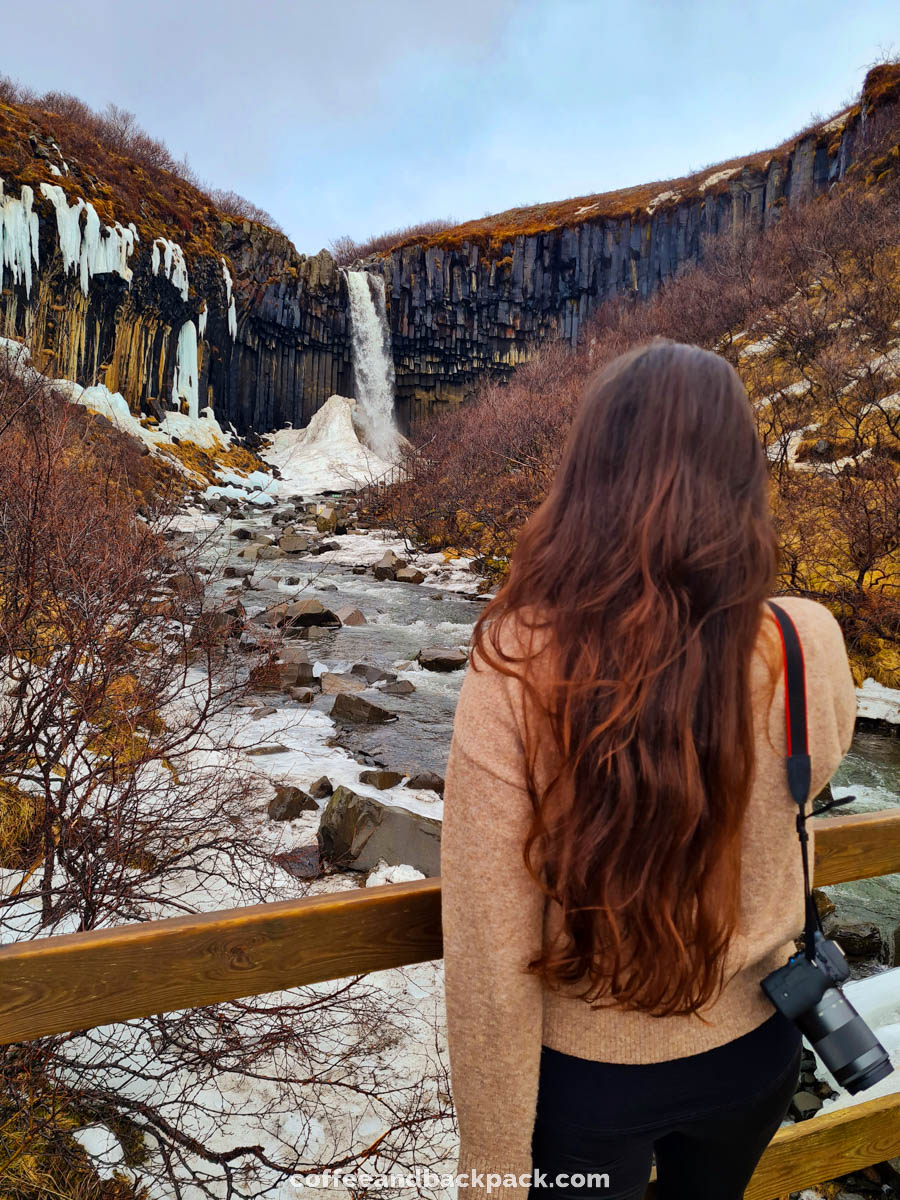Lava fields, black sand beaches, lagoons dotted with icebergs, and glaciers visible from the iconic Ring Road, the famous route that circles the island... Welcome to Iceland! A land of fire and ice, where every day brings new adventures, stunning nature, and a sense of awe-inspiring escape.
For us, Iceland is one of the wildest and most spectacular countries in Europe, and an ideal destination for a road trip close to nature— we love it so much that we've visited multiple times. Every kilometer traveled on the Ring Road reveals new wonders: some of the highest waterfalls in Europe, rugged cliffs, and charming fishing villages tucked away in fjords.
This article offers a 7-day itinerary to explore Iceland, covering the Snaefellsnes Peninsula, the must-see spots in the north, the Eastern fjords, the south of the island, and finally its capital, Reykjavik. This was the itinerary from our second trip together to Iceland.
This itinerary is perfect for a camper van trip, which we believe is the best way to explore the island. You can find all our recommendations and tips for renting a camper van in Iceland in this article! However, if you choose to rent a car and book accommodations along the Ring Road, this article will also be helpful for identifying the key places to visit each day and the best spots to stay overnight. Whether you're a nature lover, a passionate photographer, or simply seeking a complete change of scenery, a week in Iceland along the Ring Road promises an unforgettable adventure!
Day 1 - Arriving to Iceland & The Snaefellsnes peninsula
Finally, the time for your Iceland road trip has arrived! You’ve likely been eagerly anticipating this journey, filled with excitement and curiosity, and now it's time to embark on this grand adventure! Savor every moment, from landing on the Reykjanes Peninsula to your return trip home, because this experience will fly by in no time!
As soon as you arrive in Iceland, you'll probably be struck by the vast, barren lava fields that cover much of the island, with little vegetation in sight. The sensation of having landed on another planet hits you from the very first moments.
Your first day in Iceland will likely be focused on your arrival, picking up your camper van or rental vehicle, and getting those first few kilometers under your belt as you leave the Reykjanes Peninsula, where Keflavik Airport is located. We recommend heading straight toward the north, taking the Ring Road in a clockwise direction to kick off your adventure.
It's impossible to get lost on the roads in Iceland, as there’s really only one main road that circles the island: the famous Ring Road. The speed limit on this road is capped at 90 km/h, so be sure to stick to it, as speed cameras are installed along the route, and fines can be quite steep!
We suggest using this first day to stock up on supplies and head toward the Snæfellsnes Peninsula, our first major stop on this itinerary. To avoid the crowds at the supermarkets in Keflavik—where other freshly arrived campers like yourself, as well as locals doing their usual shopping, will flock—we recommend stopping in the town of Borgarnes instead. There, you can fill up on gas, water, and groceries before starting your journey in earnest.
Tip
The cheapest supermarkets in Iceland are the chains Bónus and Krónan, which you can find in towns along the Ring Road. For quick shopping needs, the N1 gas stations, also located along the Ring Road, sell food and hygiene products.
Our first stop for the first night in Iceland is in the town of Grundarfjörður, located on the Snæfellsnes Peninsula. This quiet little town offers a camping site right free in winter and is located near the famous Kirkjufell mountain and its waterfall. While the campground is open year-round, it unfortunately lacks sanitary facilities and a kitchen during the winter season.
If time permits on your first day, consider visiting Kirkjufell and its waterfall, ideally before or during sunset. The photos of this iconic pointed mountain with its waterfall set against the backdrop of the Northern Lights have made their rounds on social media. For us, it serves as a beautiful introduction to kick off this week-long road trip.
Access to Kirkjufell was previously free, but starting in 2024, there is now a fee to park. It costs 1500 Icelandic krónur to access the parking area, which you can pay directly at the meter on-site. Alternatively, you can reach Kirkjufell for free by parking near Grundarfjörður and walking there. However, this is a long trek and can be challenging due to Iceland’s unpredictable weather.
Day 2 - Journey Through Snæfellsnes to the North
This second day is dedicated to exploring the Snæfellsnes Peninsula, which includes a number of noteworthy attractions.
Start with the Ingjaldshólskirkja church, located a 30-minute drive from Kirkjufell. This small traditional church with a red roof is perched atop a hill at the end of a paved road, offering a typically Icelandic landscape.
Continue south to reach the Lóndrangar viewpoint. The road will take you around the Snæfellsjökull glacier, which you can glimpse from the road if the sky is clear.
The Lóndrangar viewpoint is easily accessible by van or car. A staircase leads you up to enjoy the view of the dark, steep cliffs along the southern coast of the peninsula. We visited on a foggy day, and the landscape felt like the perfect setting for a dark Scandinavian thriller.
Our next stop is another viewpoint: the Arnarstapi cliffs. Access is free, and a well-maintained path allows you to stroll along the cliffs to appreciate the arches, basalt columns, and the multitude of birds that have made their homes in the dark crevices of the cliffs.
With a pleasant view and easy parking, it's a great spot for lunch! For those not traveling in a camper van, the restaurant Samkomuhúsið Arnarstapa, located right near the parking lot, is open for lunch.
Continue on the road towards the cutest church in Iceland: the Búðir church. Built in the 19th century, this small black wooden church is both picturesque and elegant. If you have the time (and the desire), a path leads from the church to Búðir beach.
From the Búðir church, you will see a powerful waterfall cascading down the cliff: this is Bjarnarfoss waterfall. Access is free, and there is a parking area along with a paved path that makes it easy to reach. The waterfall flows over basalt columns formed by thousands of years of volcanic activity. When we visited in winter, large blocks of ice broke off from the waterfall with a loud crash.
Our next stop is just a 15-minute drive away: Ytri Tunga beach. This beach is known for hosting a colony of seals that come to rest and feed. The location is often touted as the ideal spot for observing and photographing an impressive concentration of seals up close. Unfortunately, the reality is quite different...
In addition to being targets for larger marine mammals and after years of hunting by humans, the seal population in Iceland has unfortunately drastically decreased. So, you’ll be lucky if you see a few seals while you’re there, but don’t expect to find a large colony as it may be presented in some photos. The seals tend to stay quite far from the beach, preferring to settle on the seaweed-covered rocks along the coast. You'll need to walk on these rocks to get closer to the seals, but do so with great caution. We unfortunately witnessed tourists slipping and injuring themselves while walking on these algae-covered rocks. Others got so close to the seals that they were caught by the tide and had to wade through the icy water to get back to the beach before getting trapped!
Our advice: manage your expectations, be patient, and bring binoculars, and a good zoom lens for your camera!
Access to this beach costs 600 Icelandic crowns. As with other paid sites, you will need to pay this fee at the parking meter located on-site.
After Ytri Tunga beach, you can make an optional stop in the town of Stykkishólmur. There, you’ll find charming cafés, a wooden church, and a lovely fishing harbor situated along a rounded cliff.
Our stop for the night is further north: the Hvammstangi campsite, located between the West Fjords and the northern part of the island. It will take about two hours to get there from Ytri Tunga beach, so prepare your best playlist and some snacks!
This campsite has the advantage of being open year-round and is situated in a remote area, although it is surrounded by houses. This is an important point, as your chances of seeing the Northern Lights will increase if you are in a location sheltered from light pollution and in the northern part of the country. It was during our stay at this campsite that we saw our first Northern Lights in Iceland, around 2AM!
Tip
To see the Northern Lights during your trip to Iceland, keep an eye on the Hello Aurora app to track the chances of auroras based on your location, and check the website
https://en.vedur.is/ for weather conditions. If the sky looks clear and the conditions are favorable for auroras, it might be wise to set an alarm in the middle of the night to catch a glimpse of them.
Day 3 - Journeying to Akureyri
This third day is dedicated to the north of Iceland.
From the Hvammstangi campsite, head towards Hvitserkur. There are two routes to get there. We took the one that circles the Vatnsnes Peninsula. It's a gravel road, so you'll need to drive slowly, but the landscapes and views of the West Fjords from this road are well worth the extra time spent in the car.
Hvitserkur is a 15-meter-high rock with a twisted shape. Isolated on a black sand beach and visible from the cliffs of Húnaflói Bay, it has become a refuge for birds and one of the most photographed spots in Iceland.
The rock can be seen from an observation platform just a few meters from the parking lot. Alternatively, a path leads down to the beach for a closer view.
Continue your journey towards Varmahlíð and the Víðimýrarkirkja church. This church, with its turf-covered roof, is one of the few remnants of traditional Icelandic architecture. Today, only six churches of this type remain in Iceland. The church is located in what was once a Viking village, and the walls surrounding it are also made of turf.
A little further along is the village of Glaumbaer, which features an old farmhouse and a church. The village is open daily from 10 AM to 6 PM but is unfortunately closed to visitors in winter (from October to March). However, you can still see it up close from the outside without having to purchase an entry ticket.
Head towards the town of Siglufjörður, nestled in the fjord of the same name. This quaint port, with its colorful houses, is considered one of the northernmost villages in Iceland. You'll find a few supermarkets and cafés for a lunch break. Be sure to visit the church of Siglufjörður, perched on a small hill in the middle of the village.
In the 1950s, Siglufjörður was one of the most populated towns in Iceland, thriving on herring fishing. The old fishing sheds, still visible on the harbor, have been repainted in yellow, green, and blue. Today, the village still heavily relies on fishing, but herring is less abundant than it once was.
From Siglufjörður, take the road towards Akureyri, the second largest city in Iceland. The route to get there includes several tunnels, which interestingly only have one lane. Drive slowly and pull into the alcoves along the tunnel if you encounter another vehicle.
Despite its small size, Akureyri is an important cultural and economic center for this region of Iceland. You will find many shops, streets lined with colorful houses, as well as numerous cafés, restaurants, and bars. The atmosphere is quite lively, both day and night, especially on Hafnarstræti street.
The church of Akureyri, perched on a hill, is one of the city's symbols and offers a panoramic view of the fjord. Its architecture, similar to that of Reykjavik, features a facade reminiscent of basalt columns.
Tip
Now that you’re in a big city, why not experience the Icelandic way of life by visiting the municipal pool in Akureyri? The outdoor pool, which is 25 meters long, is open year-round, regardless of the outside temperature. You can swim a few laps while wearing a swim cap or a wool hat! If you’re worried about the cold, don’t fret. You can warm up in the 38 and 40-degree hot tubs or in the sauna, alongside the locals. The municipal pools in Iceland also feature children’s pools with various games, ensuring there's something for everyone after school or work before a good night's sleep. Note that shoes must be left at the entrance of the pool, and it's essential to wash your entire body, without a swimsuit (yep, really!), before and after using the facilities.
For the night, we recommend the Hamrar campsite, located just a few minutes from the center of Akureyri. This campsite has a shared kitchen and showers. It is open in both summer and winter.
Day 4 - North Iceland's Waterfalls and Húsavík
This fourth day is dedicated to discovering two of the most incredible waterfalls in North Iceland, visiting the small town of Húsavík, and enjoying some relaxation in the Mývatn baths before spending the night in the eastern part of the island.
From Akureyri, take the road to the waterfall of Goðafoss. From the parking lot, where there is a café and a souvenir shop, a marked path will lead you to the observation platform of the waterfall. This stunning crescent-shaped waterfall is situated in the middle of a lava field. Its name means ‘Waterfall of the Gods’.
Continue your journey to the town of Húsavík. This charming little town is known as the "Whale Watching" capital, where you can find numerous boat tours offering sightings of various cetacean species, including humpback whales, minke whales, and dolphins, available in both summer and winter. The town has also gained popularity in recent years due to the release of the film Eurovision. As a result, you'll find a small museum dedicated to the Eurovision contest, showcasing some of the costumes used in the movie. For marine enthusiasts, the Whale Museum, located on the harbor, is a must-visit.
Tip
For lunch, we recommend the restaurant
Gamli Baukur, located in a charming wooden cabin on the harbor.
Take the road towards Lake Mývatn, which is about an hour's drive from Húsavík. The Mývatn region is simply fascinating. This vast lake is surrounded by volcanic craters, and the nearby geothermal area allows you to observe volcanic activity up close while walking among the fumaroles. We recommend getting close to the lake to admire its vastness and, above all, its tranquility, before visiting the geothermal site of Hverir. There is an entry fee for Hverir, with a parking meter located in the lot.
When there’s significant geothermal activity, you can expect thermal baths heated by volcanic activity nearby—an essential experience during a trip to Iceland! Head to the
Mývatn Nature Baths. Less popular than the Blue Lagoon due to its more remote location from the airport and Reykjavik, the Mývatn Baths are just as large, impressive, and relaxing while being less crowded and cheaper! Furthermore, unlike the Blue Lagoon, the baths are situated at a higher elevation, offering panoramic views of the surroundings.
Like at the Blue Lagoon, you can enjoy a sauna, steam room, and a soak in milky water at 38 degrees Celsius, all while sipping on a beer. Entry must be booked in advance through the Mývatn Baths’ website. The entrance fee is 6,900 Icelandic krona for an adult, which is about 45 euros.
To wrap up this day, take the road to Europe’s highest waterfall, Dettifoss, located just 40 minutes from the Mývatn Baths. Access is free, but be cautious—the road leading there can sometimes be closed. It’s a long gravel road, often snow-covered in winter and spring, so make sure it's open before you head out.
During our trip to Iceland in March, we were fortunate—the road, though partially cleared of snow, was open. It took us a bit longer than the GPS estimated to navigate the gravel road and reach the waterfall. A few hours after our visit, it started to snow, and the road was closed for several days. Several tourists attempted to reach the waterfall despite the road closure and found themselves stuck in the snow.
Dettifoss is located in Vatnajökull National Park. With a height of 44 meters and a width of 100 meters, pouring nearly 500 cubic meters of water per second, it is one of the most powerful waterfalls in Europe. From the parking area, a marked path will lead you to the observation platform. You’ll be quite high above the waterfall, but be prepared to get splashed by Dettifoss!
For the night, stop in the town of Egilsstaðir, where you'll find a small camping site open year-round. This campsite offers laundry facilities, a spacious lounge with tables for dining, as well as a large shared kitchen, showers, and restrooms. It's also a great base for picking up supplies and setting off towards the East the following day.
Day 5 - From East Fjords to Southern Shores
This new day is dedicated to exploring the eastern part of the island and some points of interest in the southeast of Iceland before stopping in the town of Vík.
There are many places to visit in East Iceland, starting with the Stuðlagil Canyon, the fishing town of Seyðisfjörður, or the Hengifoss waterfall. During our visit in March 2024, the weather unfortunately wasn't on our side that day. The road between Egilsstaðir and Seyðisfjörður was too snowy, just like the hiking trail leading to Hengifoss waterfall. We hope you'll have better weather than we did to visit these two locations!
Traveling in Iceland also means accepting that weather conditions can influence your itinerary and finding alternatives. That’s why traveling by van is the best option for us: you will never be stuck in one place because of bad weather. For this day, for example, we headed south to sites that can be easily visited regardless of the weather conditions.
We made our way to the town of Djupivogur, which features a small fishing port and colorful houses. You’ll find the charming café Langabúð on the port for a lunch break.
From Djúpivogur, head to Stokksnes. This site includes several points of interest, such as a reproduction of a Viking village used for films, a beach with black sand dunes, and the famous Stokksnes cliffs. These dramatic and steep cliffs beautifully reflect on the black sand beach when the weather is favorable.
Access to the village and the viewpoint over the Stokksnes cliffs is not free. You’ll need to purchase your access at the Viking Café & Guesthouse, located next to the parking area.
We visited Stokksnes twice, in 2023 and 2024. Unfortunately, we had bad weather both times. The cliffs were shrouded in mist, and we could only see the Viking village and the black sand dunes (while braving the storm).
We hope you’ll be luckier than we were with the weather. If not, like it did for us, the
Viking Café will comfort you with waffles and a cozy hot chocolate. We also got treated by spotting some wild reindeers from the road.
From Stokksnes, follow the Ring Road to Jökulsárlón Glacier Lagoon and the Diamond Beach. The road runs along the start of Iceland's southern coast and the Vatnajökull Glacier.
Jökulsárlón Glacier Lagoon is one of those must-see places when traveling in Iceland. Partially frozen, it's dotted with icebergs that drift into the sea. Some wash ashore on the adjacent black sand beach, sparkling like diamonds in the sunlight, giving this unique spot its name, Diamond Beach.
Jökulsárlón is a timeless place, best experienced in silence to hear the icebergs cracking and not disturb the seals napping on their icy beds. You might even witness an iceberg breaking off and crashing into the lagoon, sending waves that shatter the tranquility of this magical place.
Parking at the Visitor Center and lagoon costs 1,000 ISK. As with other sites that became paid in 2024, you’ll need to purchase your ticket at the parking meter and display it clearly in your vehicle.
The parking area for accessing Diamond Beach is just after the bridge that crosses the lagoon when arriving from the east of the island. Depending on the time of year you travel to Iceland, the size of the ice blocks on the beach will vary. For example, during my trips to Iceland in May, the icebergs stranded on the beach were impressive, most of them taller than I am. However, when we visited in March, only small ice blocks were found on the beach, as the temperature was still too cold for large icebergs to break off from the lagoon.
In any case, this black sand beach is worth the visit. You may also spot seals popping their heads above the water.
For the night, make a stop in the town of Vík to be close to the many sights you’ll want to explore the next day. There’s a campground open year-round, though unfortunately, it doesn’t have any sanitary facilities. You can simply park your van for the night.
Easily accessible from Reykjavik, Vík is quite a touristy town. You’ll find several guesthouses, as well as souvenir shops, cafés, and restaurants.
Day 6 - Exploring the Wonders of South Iceland
To start your day off right, head to
Skool Bean Café, a rather quirky café set up in a retro school bus. It's located just a few steps from the Vik campsite. The café opens daily at 9 a.m., except on Mondays and Tuesdays. Be sure to go right when it opens if you want to enjoy a coffee or tea on-site. You'll also find a selection of pastries and bagels to fill you up before a busy day of sightseeing.
Before leaving Vik, be sure to visit its wooden church, which overlooks the town and offers a stunning viewpoint of the town and its surrounding cliffs.
The next stop on this itinerary is undoubtedly one of the most beautiful beaches in Iceland: Reynisfjara's black sand beach.
With its basalt columns and black sand, this beach evokes the Giant’s Causeway in Northern Ireland combined with the most stunning beaches of Tenerife (minus the warmth, of course!).
If the weather is favorable, take a walk along the beach and climb the basalt columns. Be cautious of the waves, which can suddenly surge up to the cliffs. Wave intensity is marked on the beach to help visitors take precautions.
Like many sites in Iceland, access to Reynisfjara beach is no longer free. It costs 1,000 ISK per vehicle to access the beach.
Continue your journey to the Dyrhólaey viewpoint, just a 20-minute drive from Reynisfjara beach.
We love this viewpoint because it offers an incredible view of an endless stretch of black sand (hence its name, "the endless black sand beach") and the Dyrhólaey arch, which serves as a bird sanctuary. The small Dyrhólaey lighthouse is also worth a visit. However, be cautious, as this viewpoint is often exposed to strong winds that can sometimes be quite fierce. Hold on tight during your visit, or be prepared for the possibility that the road may be closed due to weather conditions.
Continue towards another of Iceland’s iconic waterfalls, Skógafoss.
Visible from the Ring Road, Skógafoss spans 25 meters in width. A staircase allows you to climb up and get a higher vantage point, leading to the Skóga River and a viewing platform just above the waterfall, where you can truly appreciate its power. Skógafoss used to mark the beginning of the coastline and used to plunge directly into the sea, which is now located almost 5 km away from the waterfall.
Access to Skógafoss is free, and the parking area makes for a great spot to enjoy lunch with a view of the waterfall.
Our next stop is the Seljalandsfoss waterfall. You’ll spot this 60-meter-high waterfall from the Ring Road. Parking costs 800 ISK, with no time limit on how long you can stay.
In summer, you can walk behind the waterfall to admire it from the back. However, in winter, the base of the waterfall is blocked by snow, making it impossible to get as close.
Just a 5-minute walk from Seljalandsfoss is Gljúfrabúi, a hidden waterfall inside a canyon. It's a must-see! Be warned though, it's impossible to leave the canyon completely dry! In winter, the rocks at the base are covered with ice, and you'll need to walk on a sheet of ice to reach the waterfall. Be careful! We saw some tourists slip and end up with their feet in the freezing river water!
Our last stop for the day is the hidden pool of Seljavallalaug, certainly one of our favorite spots in Iceland! This 25-meter-long pool is tucked away in the mountains and is accessible after a short one-kilometer hike that offers stunning views of the snow-capped mountains.
The pool was built in 1923 to allow local residents to learn to swim. It is fed by a natural hot spring, giving the water a greenish tint due to algae.
It’s an incredible setting for a swim by the river with breathtaking mountain views! A small building adjacent to the pool provides changing facilities and a place to keep your belongings dry. Access is free.
Fun fact - Following the eruption of the Eyjafjallajökull volcano in 2010, the pool was filled with ash and became unusable. Volunteers cleaned the pool during the summer of 2011.
For the night, stay at the
Reykjavik Camping site so you can visit the capital the following morning. This campsite offers all the amenities (showers, kitchen, Wi-Fi, laundry, etc.) and is open year-round.
Day 7 - Exploring Reykjavik & Relaxation at the Blue Lagoon
This last day in Iceland is dedicated to visiting the capital, Reykjavik, followed by a well-deserved moment of relaxation at the Blue Lagoon.
Start your city tour at Tjörnin Lake, located in the old Reykjavik district. This lake is home to over 40 different species of birds. In winter, the lake freezes and turns into an ice rink right in the heart of the city.
Tip
To park your vehicle while visiting Reykjavik, aim for the University of Reykjavik Gravel parking lot. It has the advantage of being free and is only a 20-minute walk from Hallgrímskirkja.
As the northernmost capital in the world, one might think that Reykjavik is a dull and austere city. That couldn’t be further from the truth! You’ll see for yourself that the city is vibrant in color, and Reykjavik’s nightlife rivals that of other European capitals!
We fell in love with the colorful houses, from their walls to their roofs, which Icelanders cover with colourful metal sheeting to protect against the cold and strong winds. Reykjavik also has the advantage of being a walkable city, so you can easily explore everything on foot in pretty much half a day.
Cross old Reykjavik to reach Hallgrímskirkja.
Hallgrímskirkja is the Lutheran church of Reykjavik. The architecture of this church, designed by Guðjón Samúelsson, pays homage to Icelandic nature, as it reflects the geometric shapes of the basalt columns that can be admired at Reynisfjara beach and at the Svartifoss waterfall.
The interior of the church is very simple and houses an impressive organ.
Hallgrímskirkja is open from 10 a.m. to 8 p.m. Take the elevator to the top of the church tower and enjoy the view of Reykjavik's colorful downtown.
In front of the church stands the statue of the Viking Leifur Eiríksson, who is said to be the first European to discover America. This statue was gifted by the United States in 1930, to celebrate the thousandth anniversary of the Icelandic parliament.
For breakfast, enjoy nothing but the best cinnamon rolls in the city! Head to
Braud & Co, a bakery that has become very popular in Reykjavik.
Its facade covered in unusual murals is eye-catching, but it's the aroma wafting from the ovens that will draw you into this bakery.
Continue towards Laugavegur. This part of the city is the liveliest. It is home to numerous cafés, restaurants, bars, and shops. Murals decorate the facades of the houses and boutiques. It’s the perfect place to do some shopping and relax with a drink while watching the passersby.
For lunch, we recommend
Café Babalu, easily recognizable by its orange facade. Pastries, coffees, burgers, and comforting soups: their menu has something to satisfy all cravings and dietary needs. The café's decor is vibrant, filled with many quirky trinkets and figurines. Star Wars fans will particularly enjoy their trip to the restroom.
Continue toward the harbor, making a stop in front of Harpa, the concert hall and conference center of Reykjavík. The façade of this building, inaugurated in 2011, was designed to resemble the shape of basalt columns. The colors of Harpa evoke those of the Northern Lights.
Conclude your day with a moment of relaxation at the Blue Lagoon.
This place is a must-visit in Iceland! No wonder, as the photos of its blue, milky waters have made their way around the world. Visitors from all corners of the globe make the Blue Lagoon their first stop in Iceland. For us, it was more like our last stop to end our trip on a high note.
The Blue Lagoon was born from the wastewater of the Svartsengi geothermal power plant. It was transformed into a spa in 1987.
Today, the lagoon is still heated and supplied by the geothermal plant, which means the water in the lagoon is renewed every 40 hours.
Rich in sulfur and silica, the waters of the Blue Lagoon are known to soothe various skin conditions.
The entrance fee for the lagoon ranges from €58 to €94 for the basic entrance, called "Comfort," which includes access to the pools and saunas/steam rooms, a towel, and a drink. An electronic wristband system allows you to reserve a locker in the changing rooms and order your drink at the poolside bar.
The lagoon is immense and features a distribution point for face masks, and even a bar accessible from the water. There's no need to leave the water to order a drink!
Tip
Make sure to book your tickets in advance for the Blue Lagoon. Prices vary depending on the day and time chosen. The earlier or later in the day you go, the cheaper the entry will be.
It is with this nearly 3-hour soak that we concluded our week-long van trip along the Ring Road. We hope this article will be helpful for your journey in Iceland. Feel free to check out our
4-day itinerary in Iceland if you have less than a week or if you want to incorporate a visit to the Golden Circle into this itinerary. Finally, don’t hesitate to contact us via social media to share your experience of this itinerary or to get more details about it.
Like this article? Save it on Pinterest!
